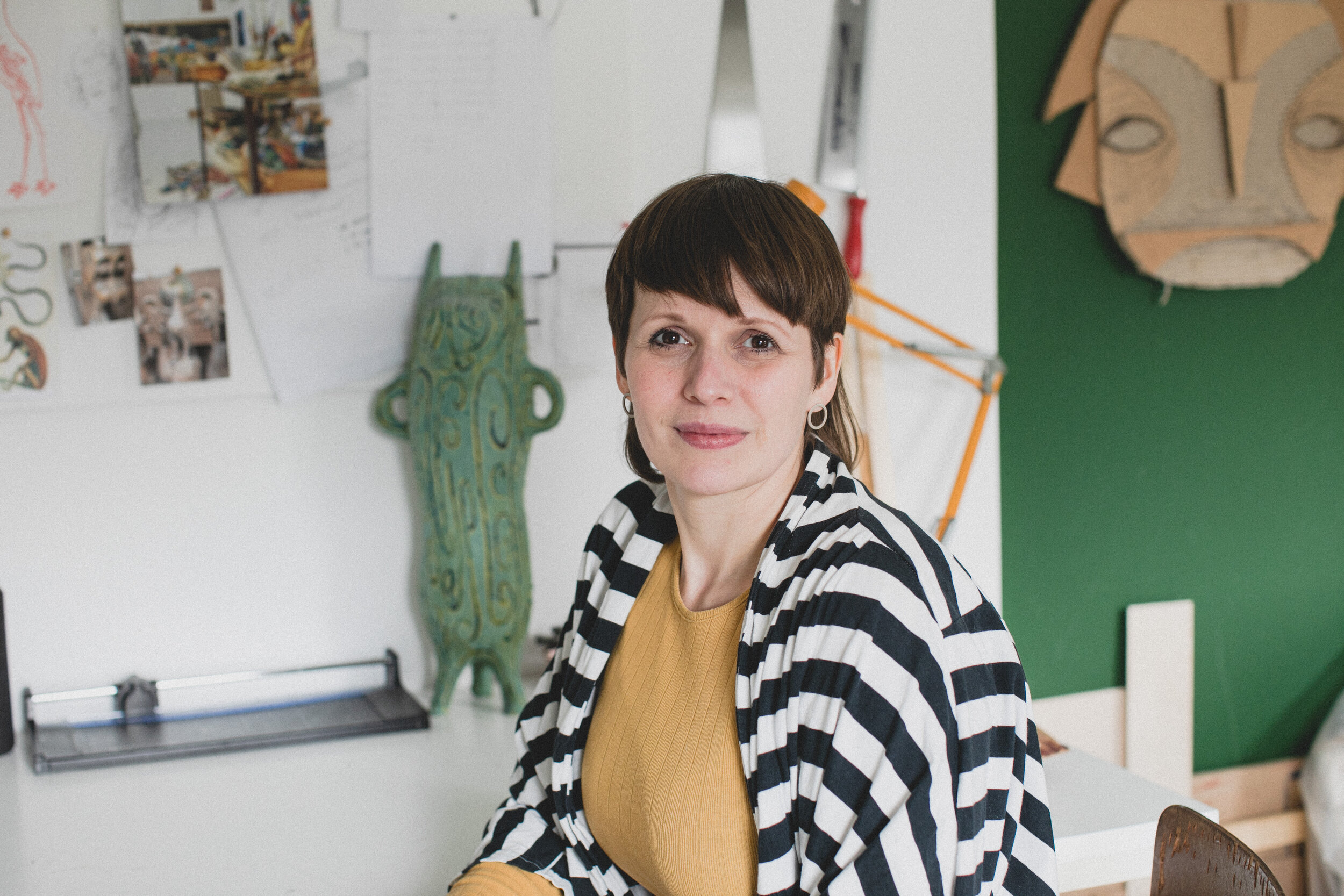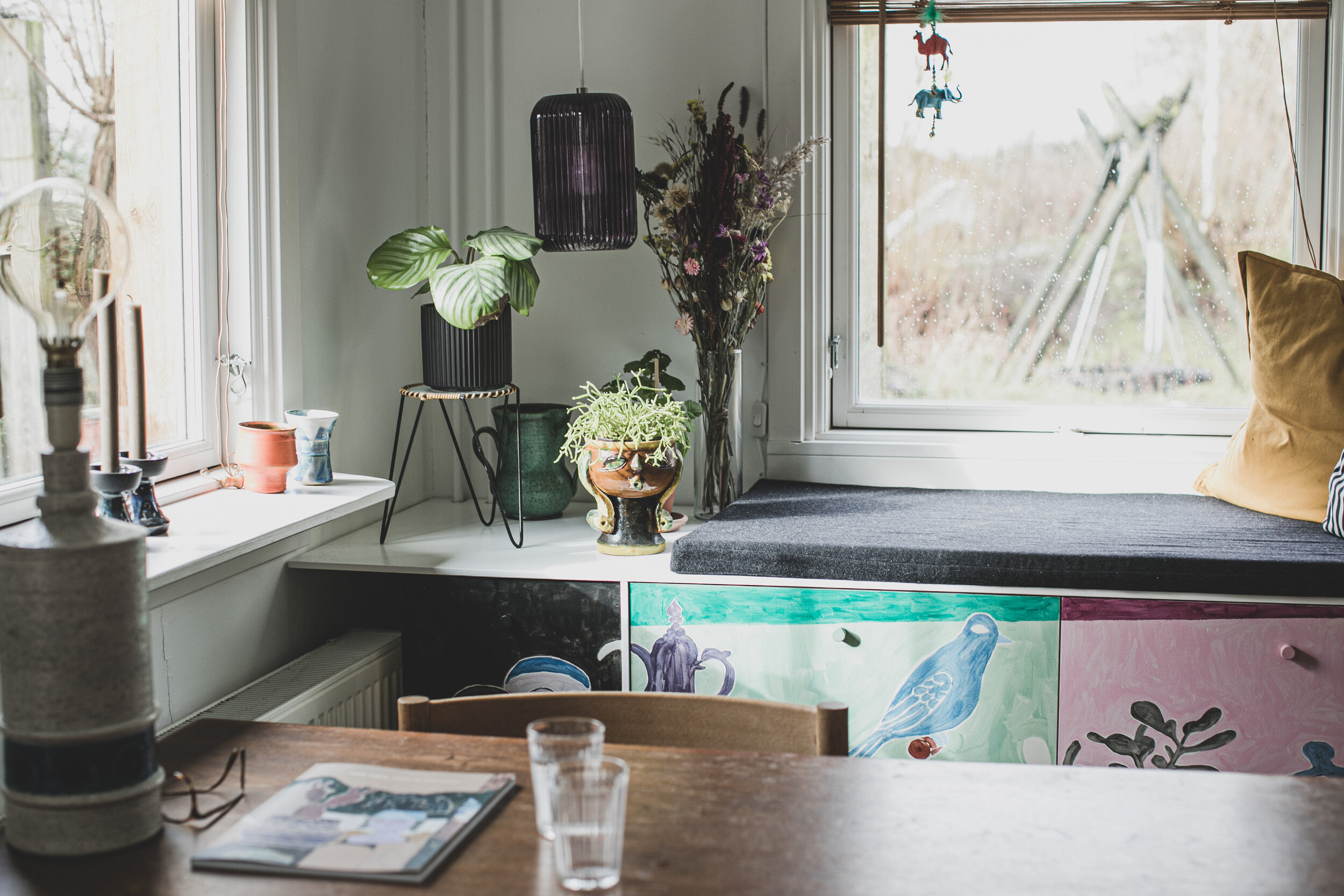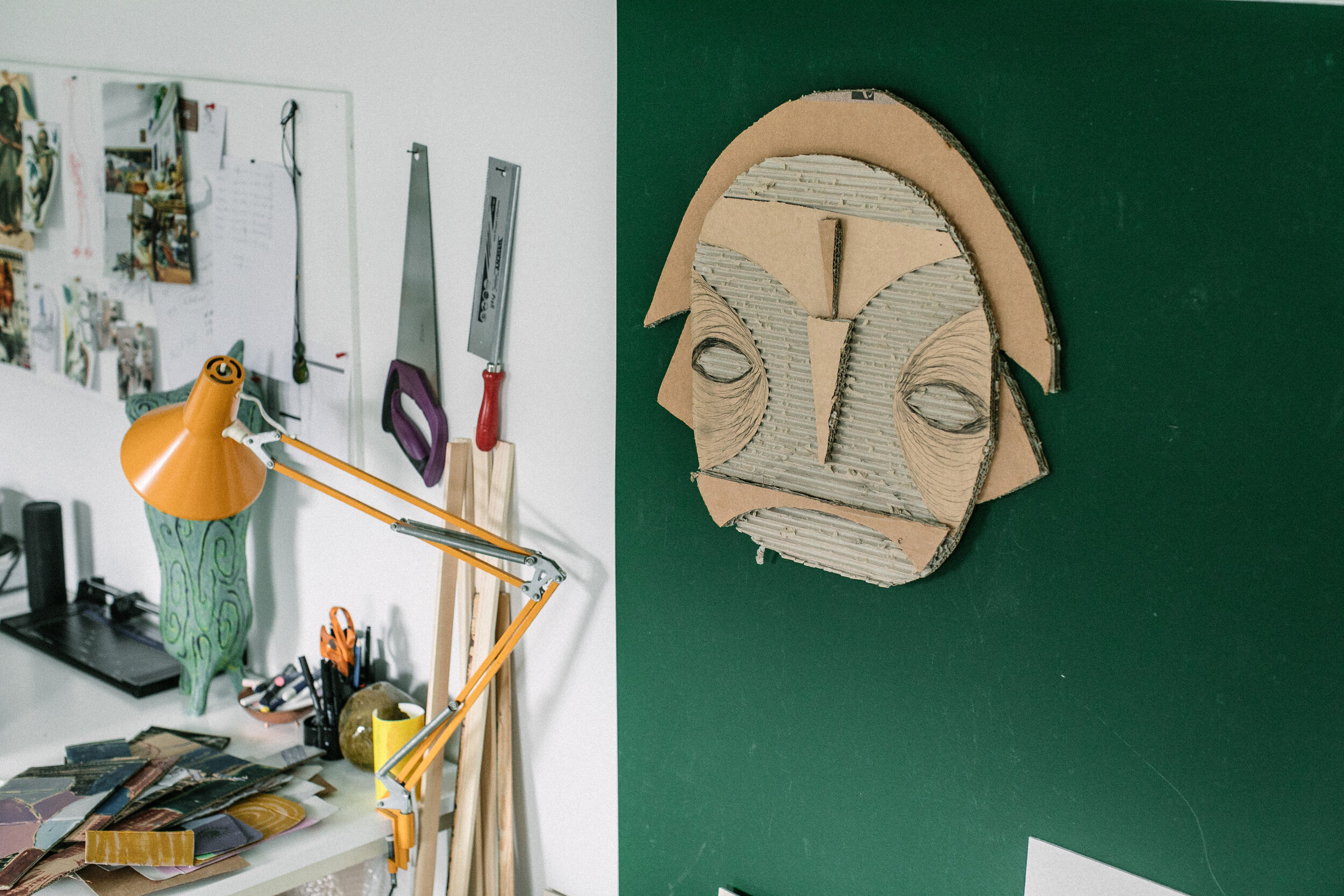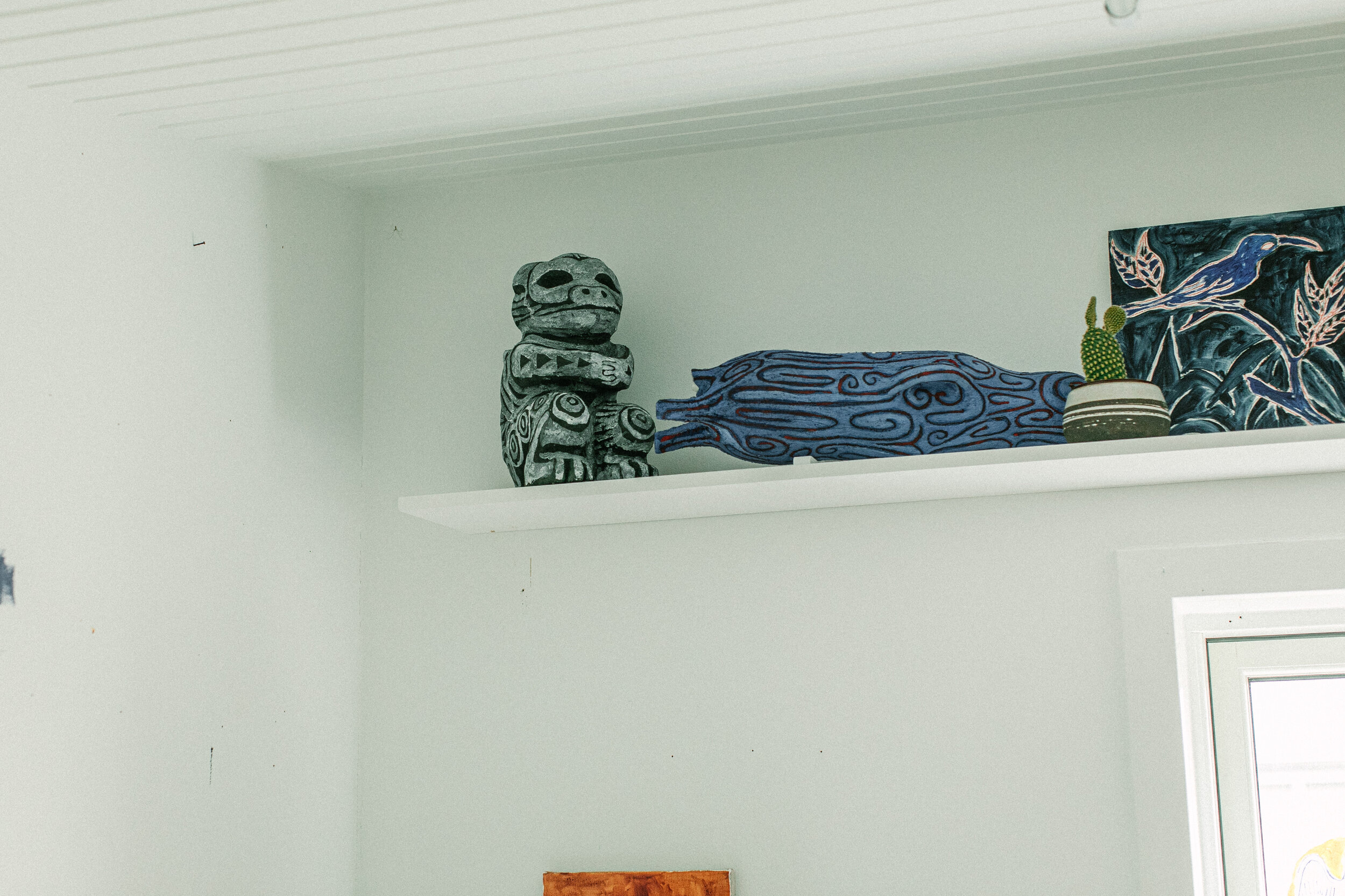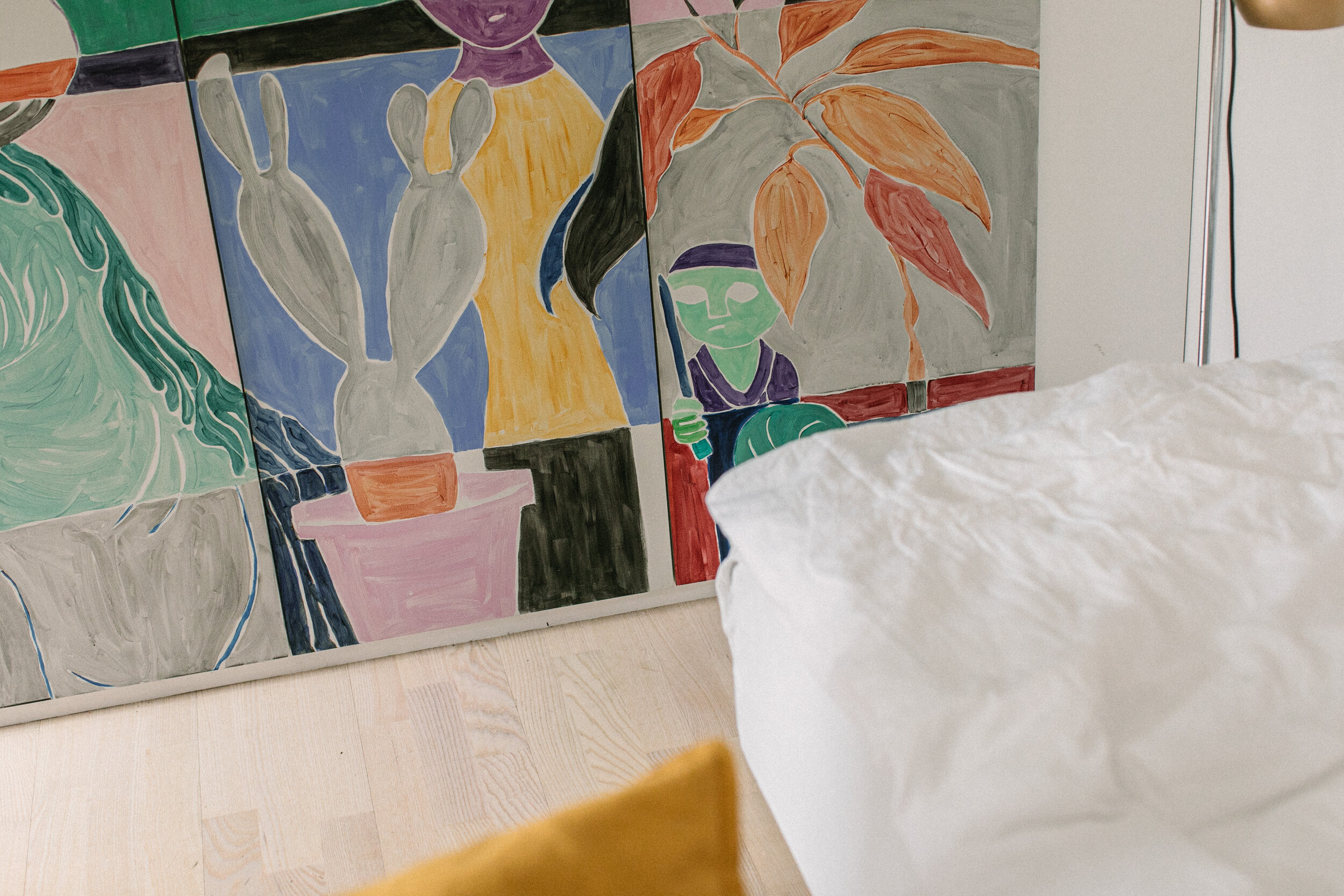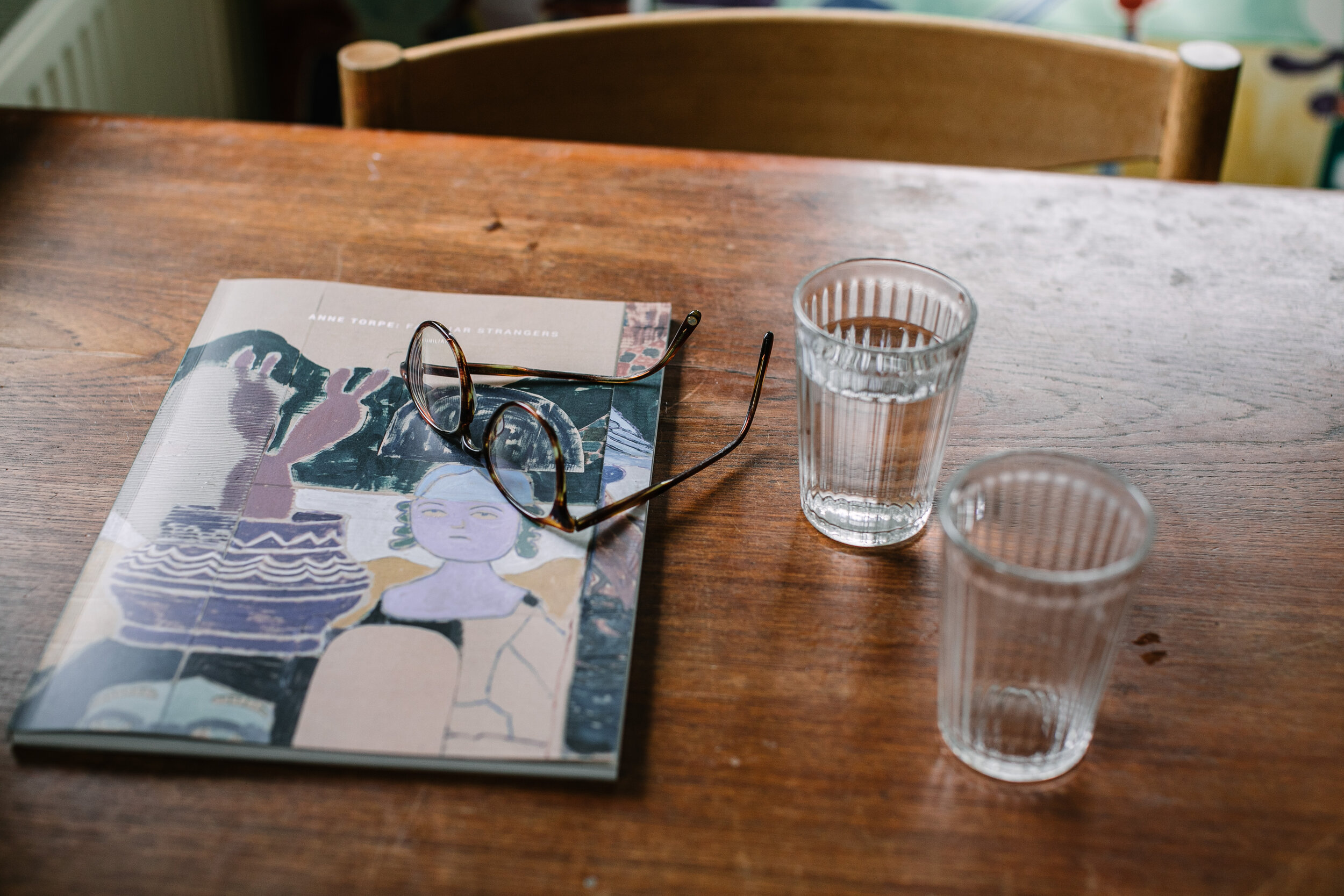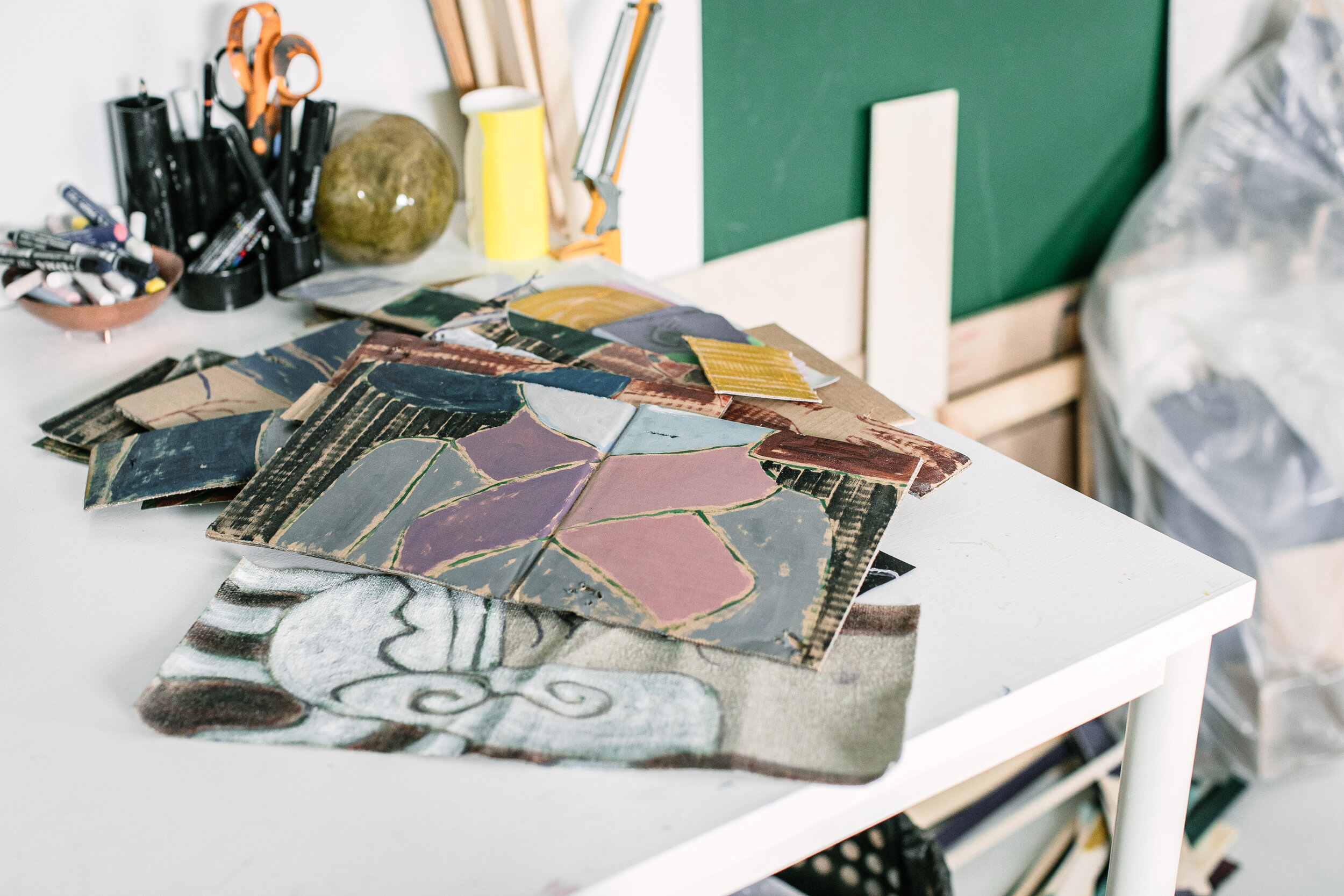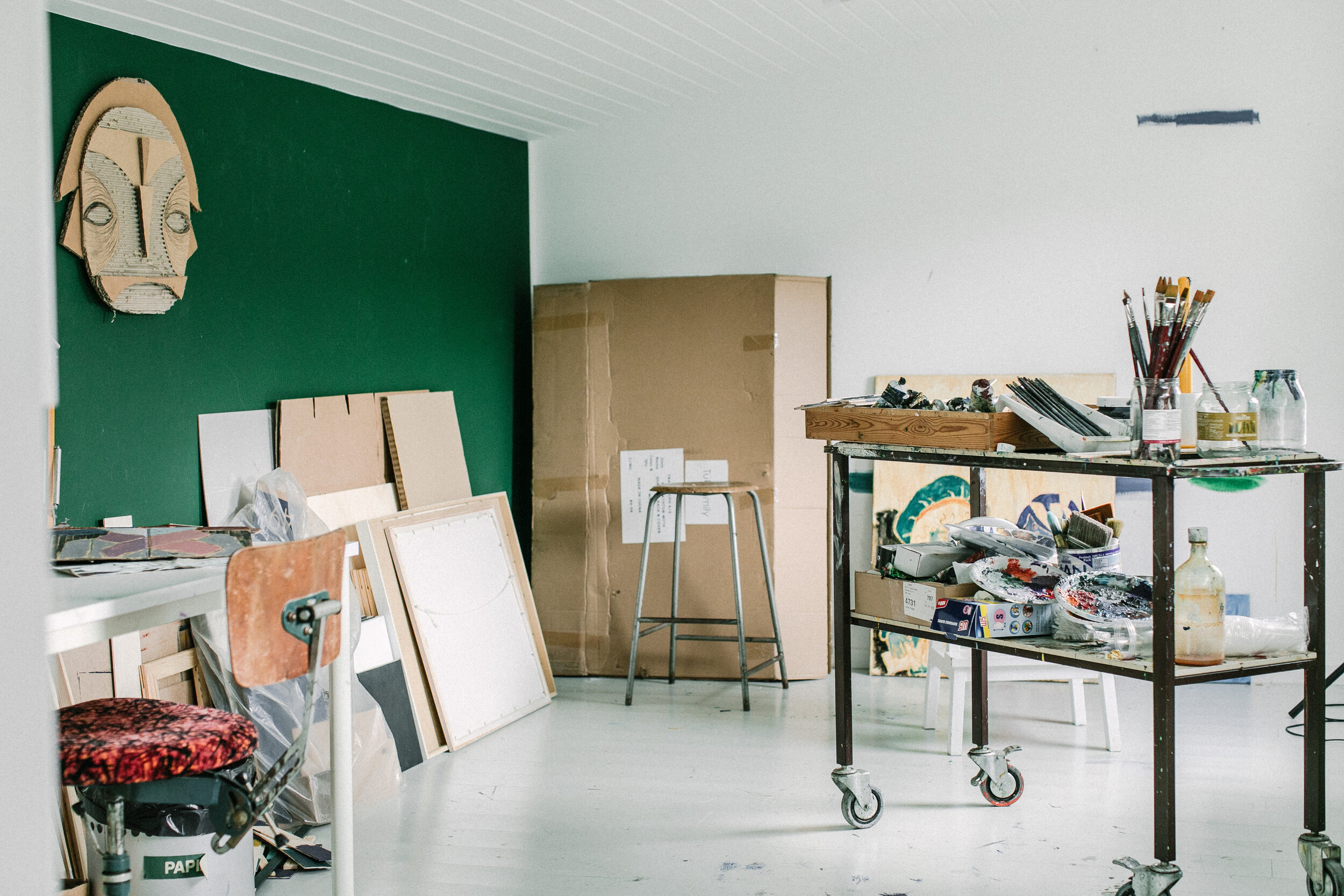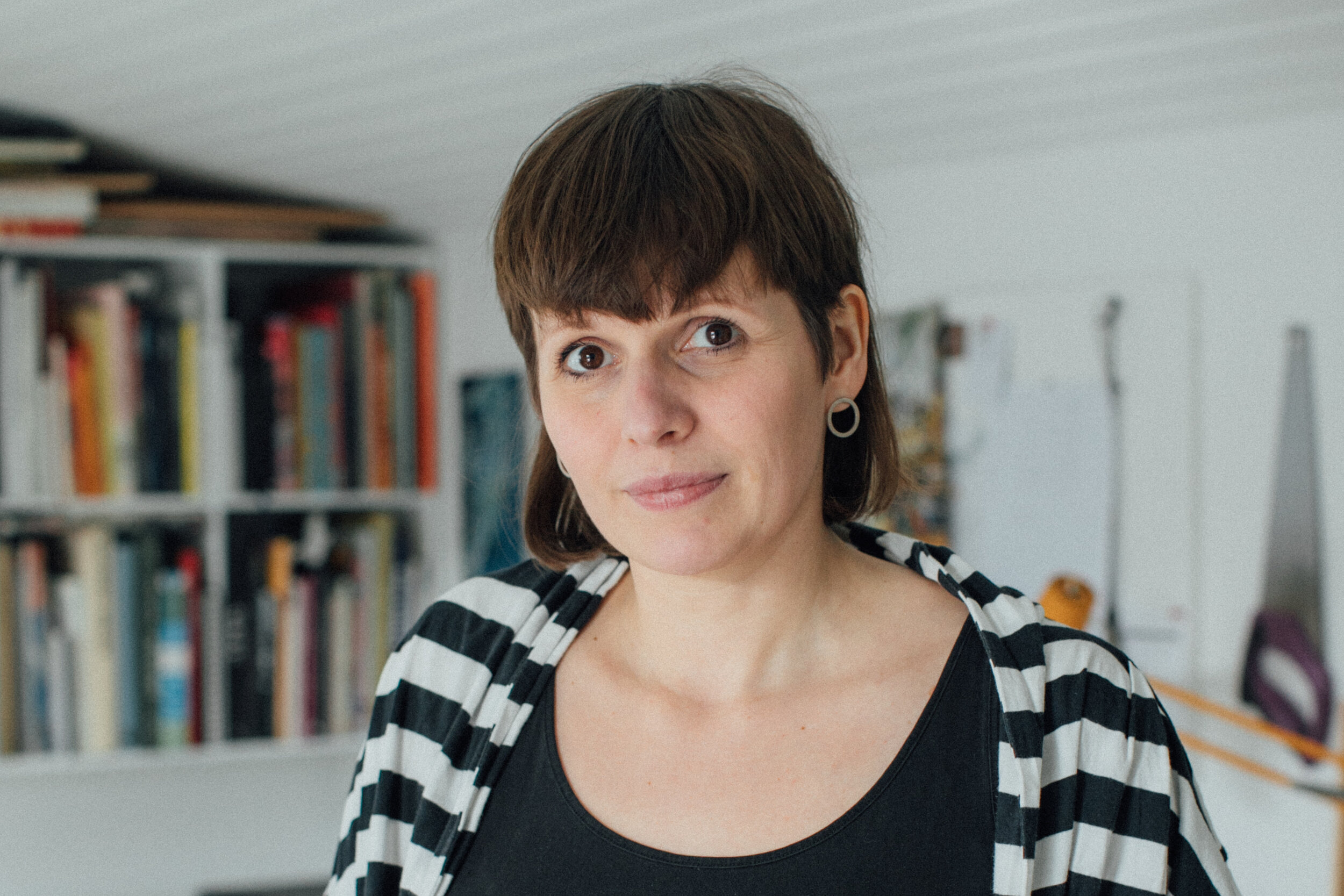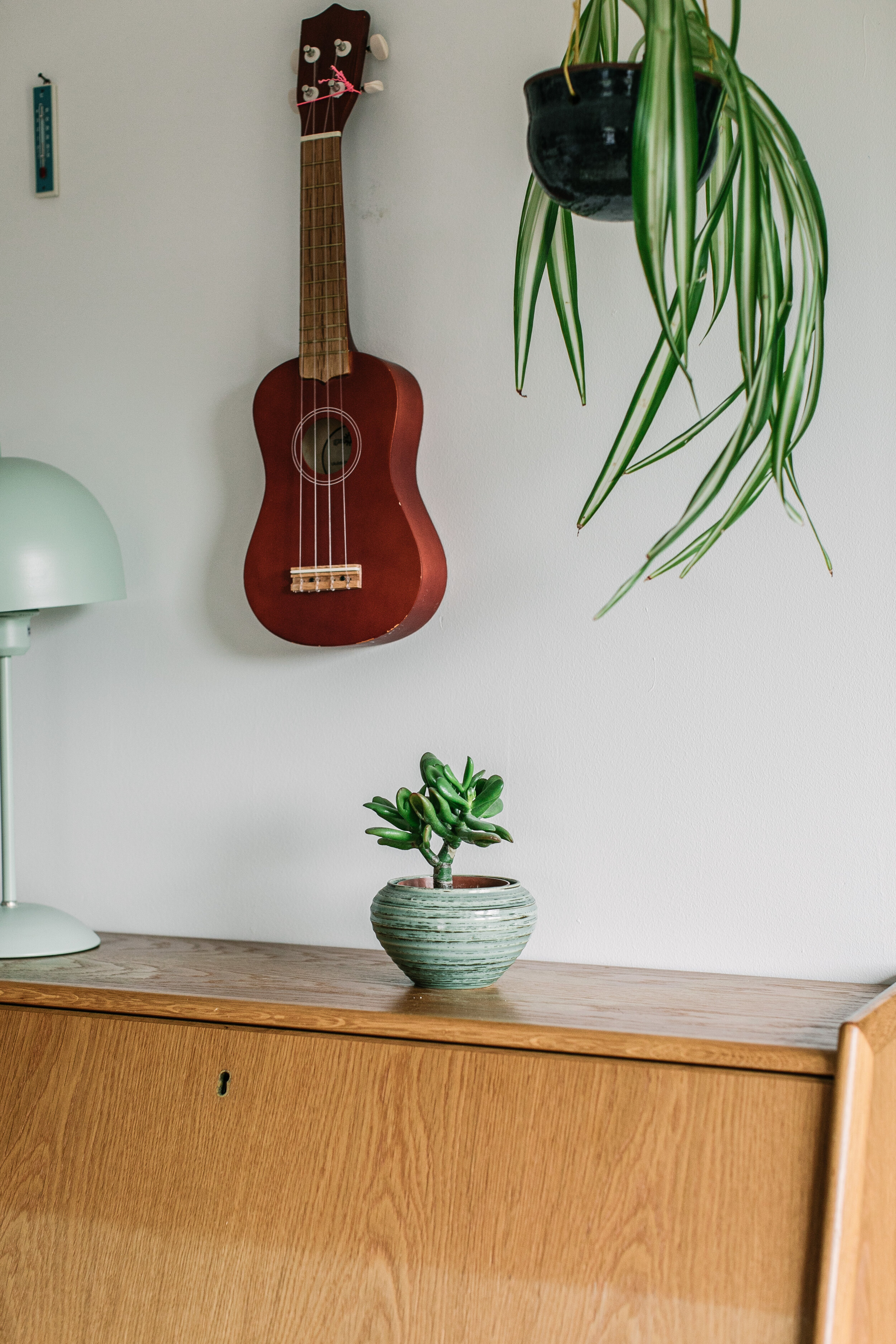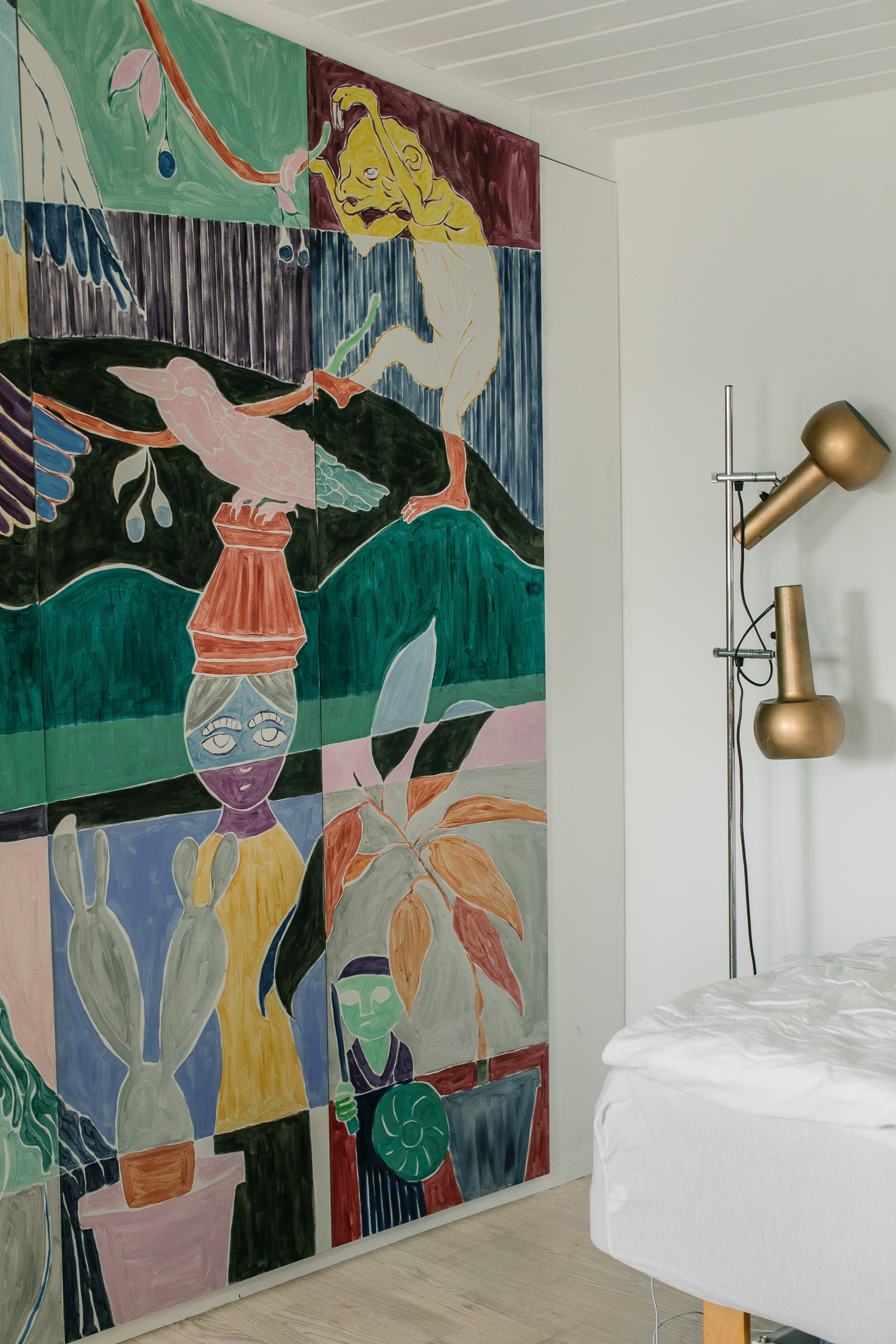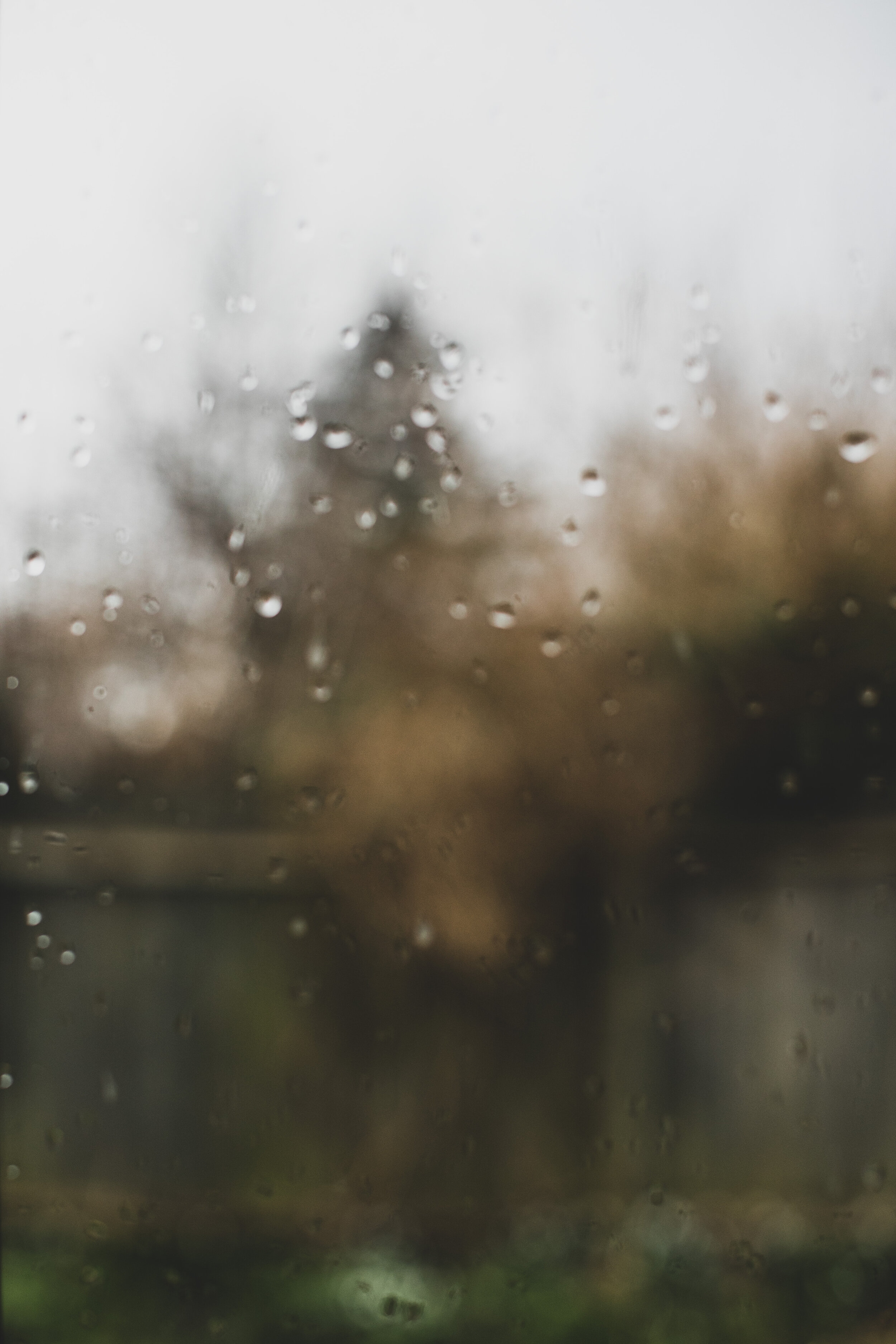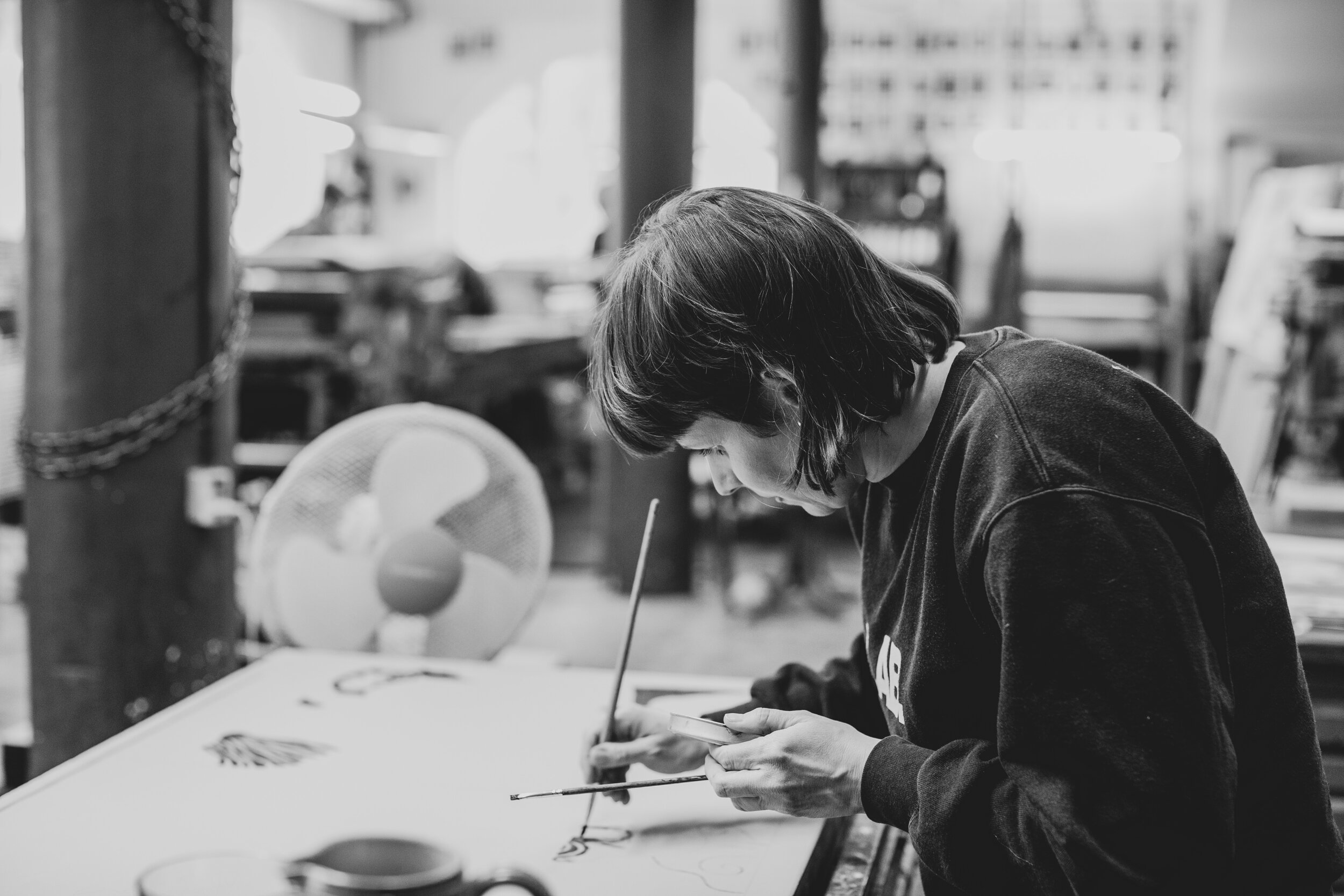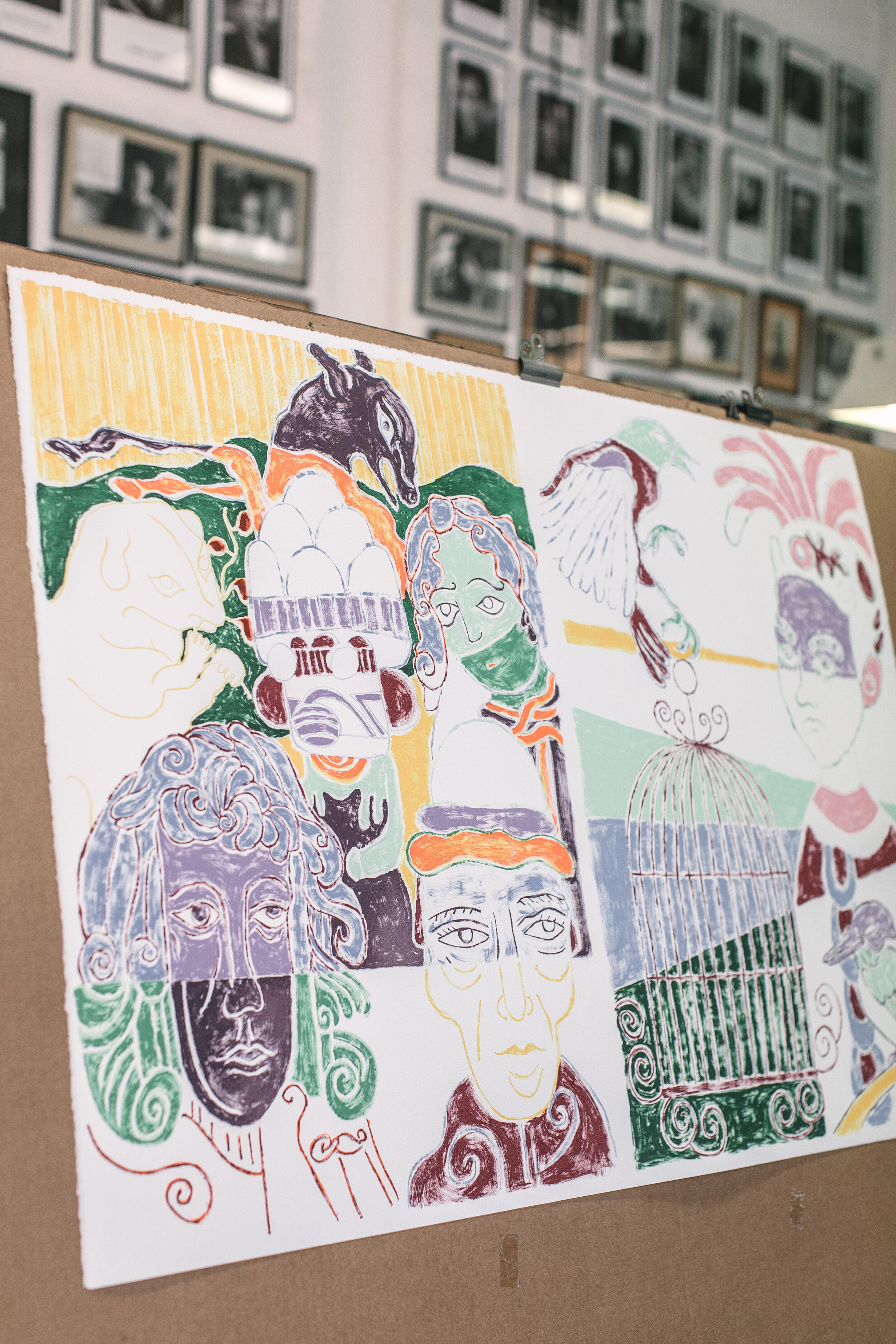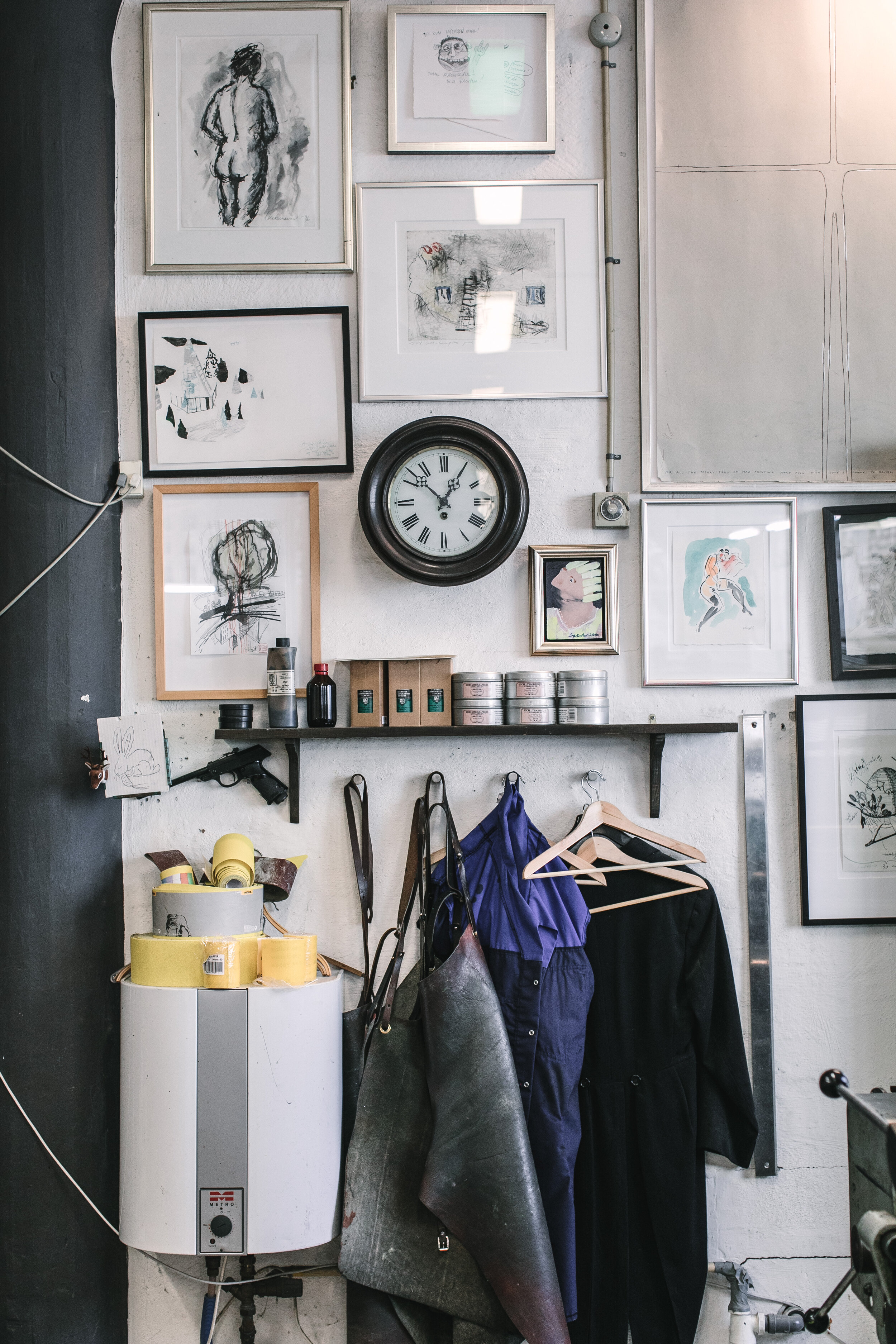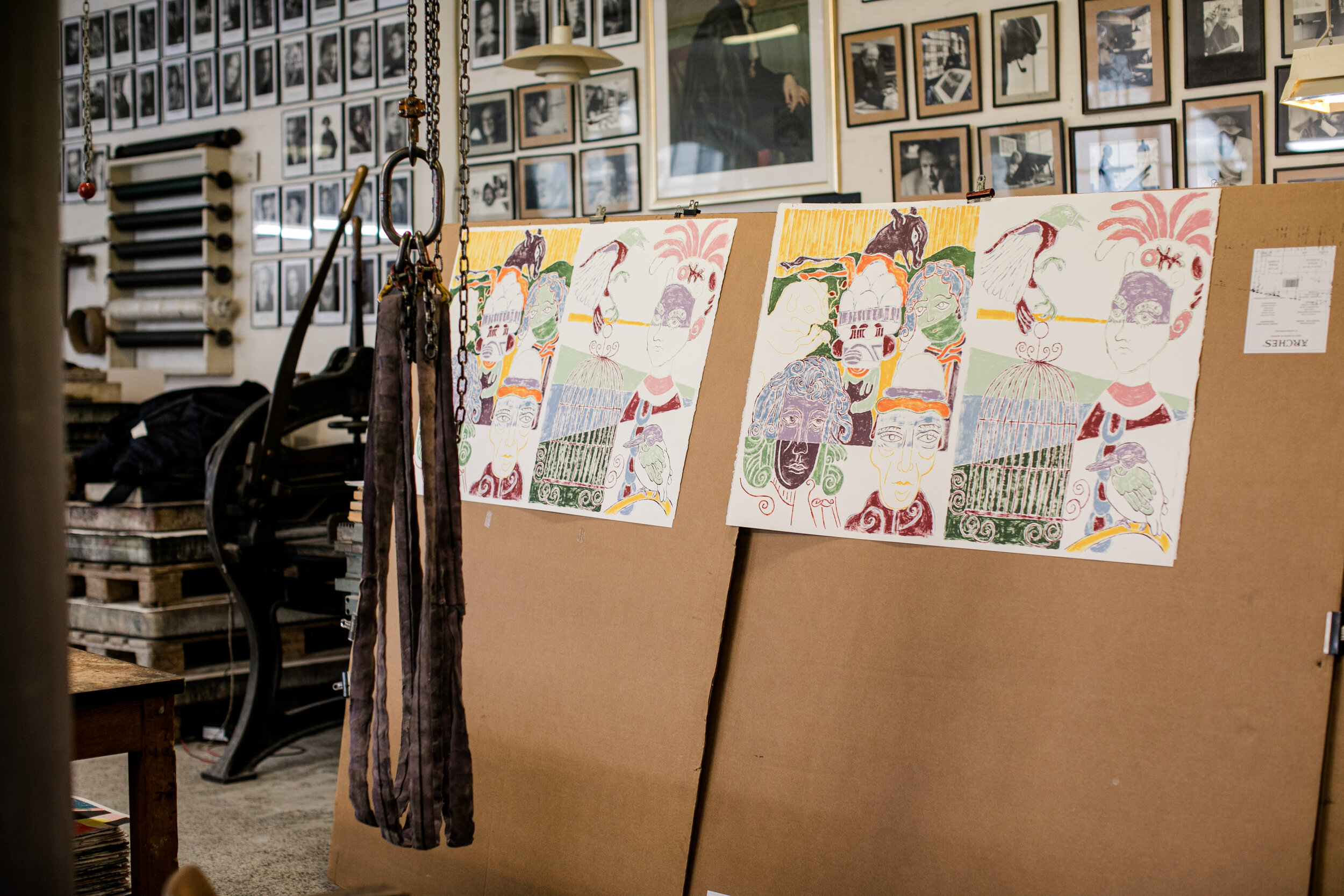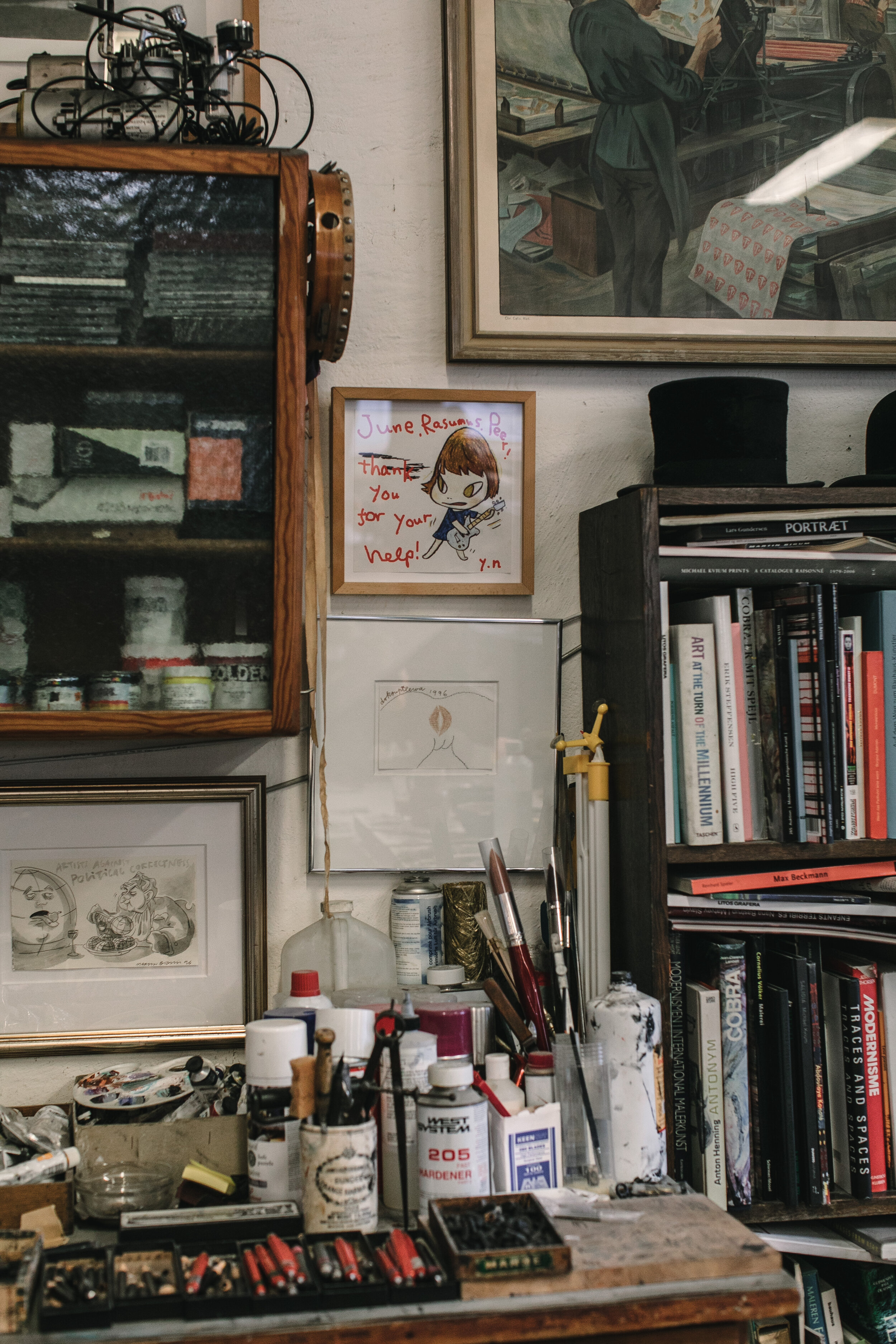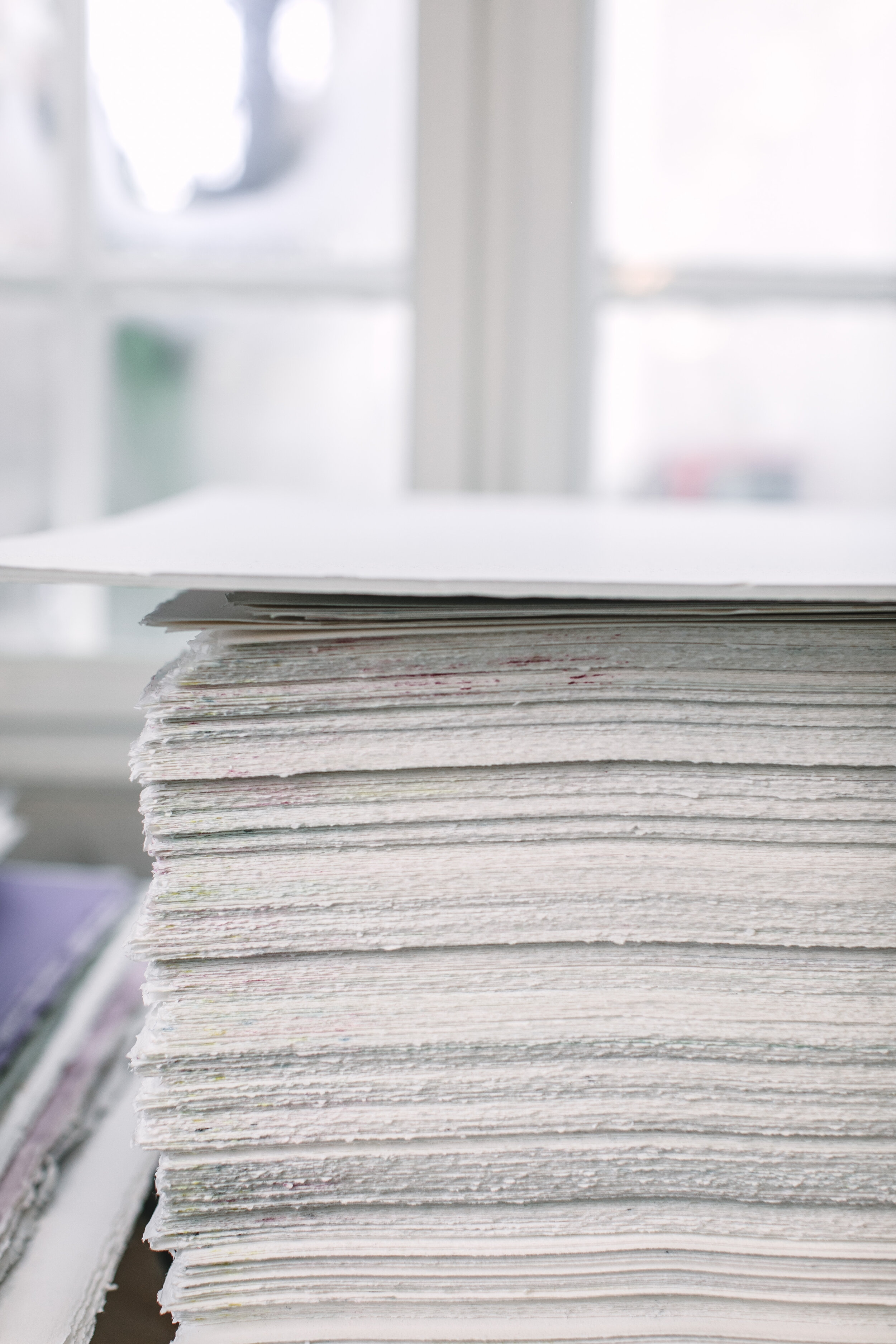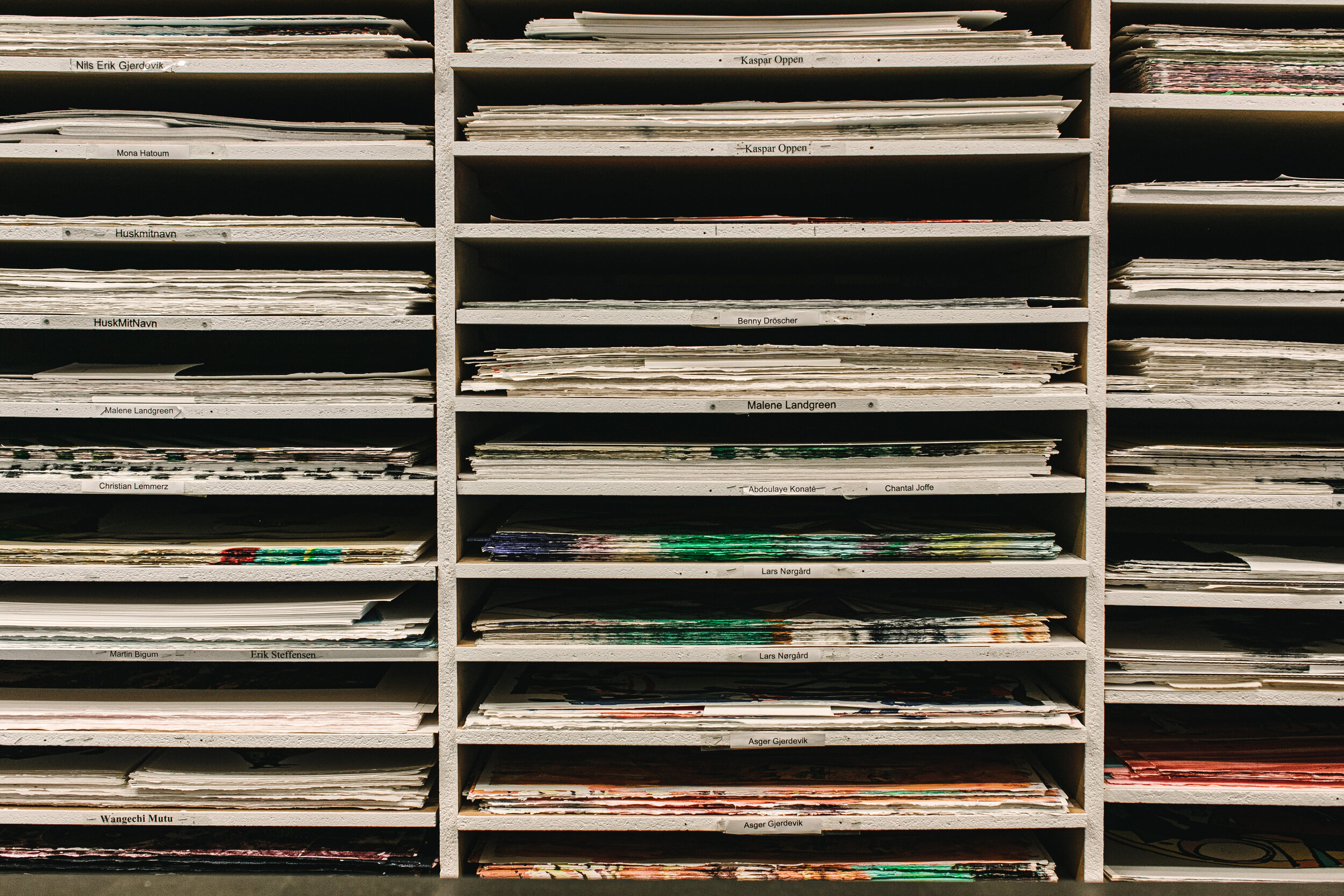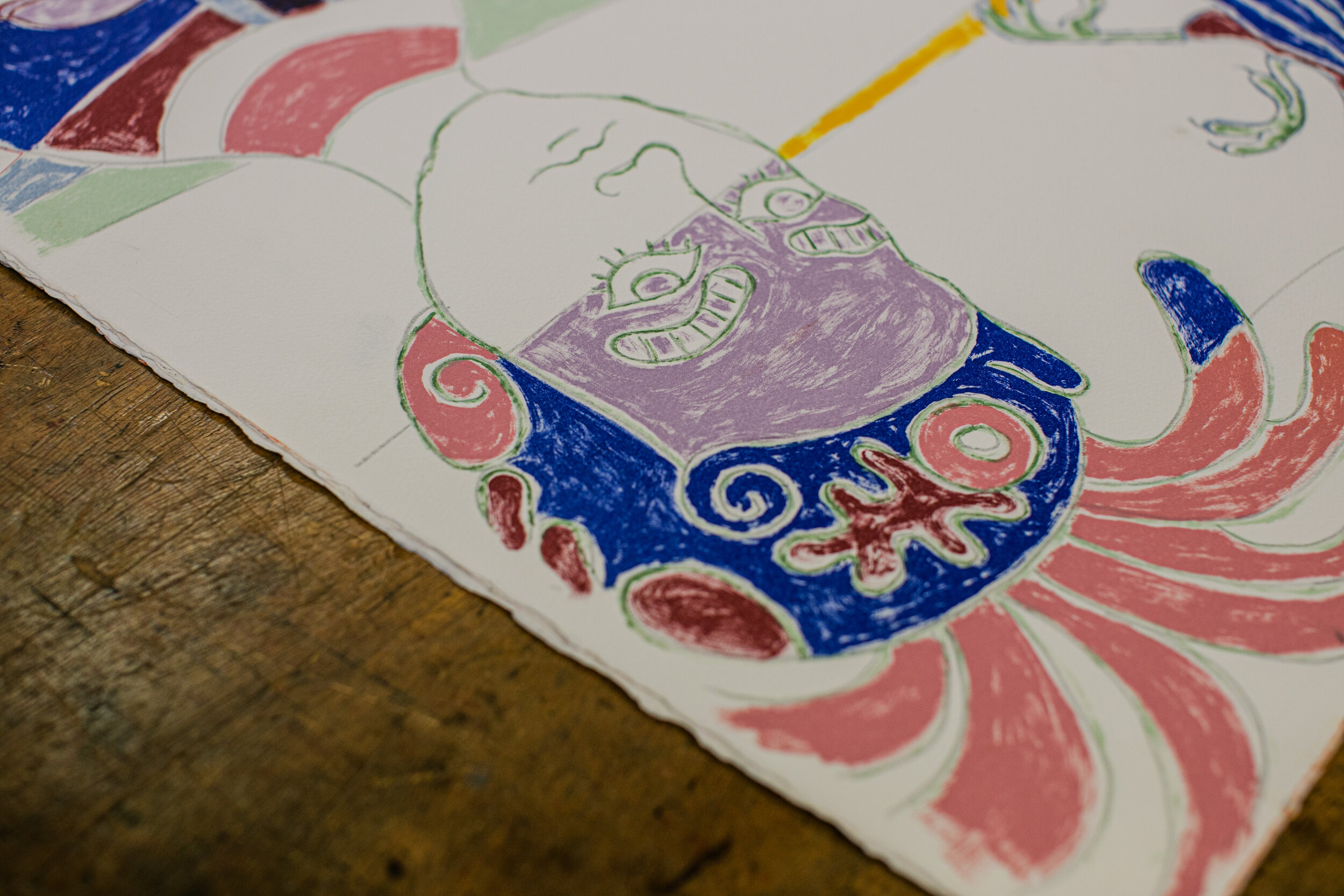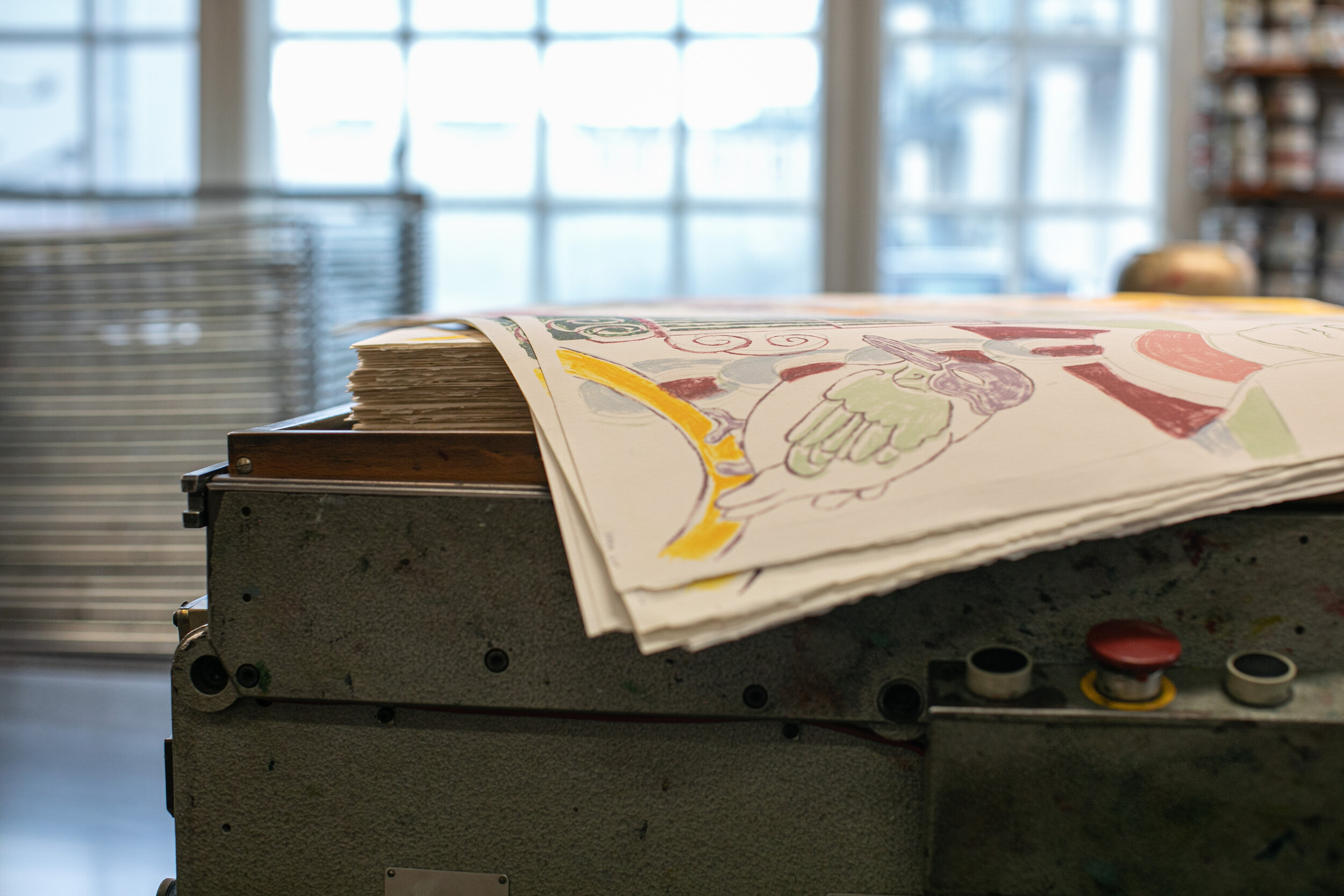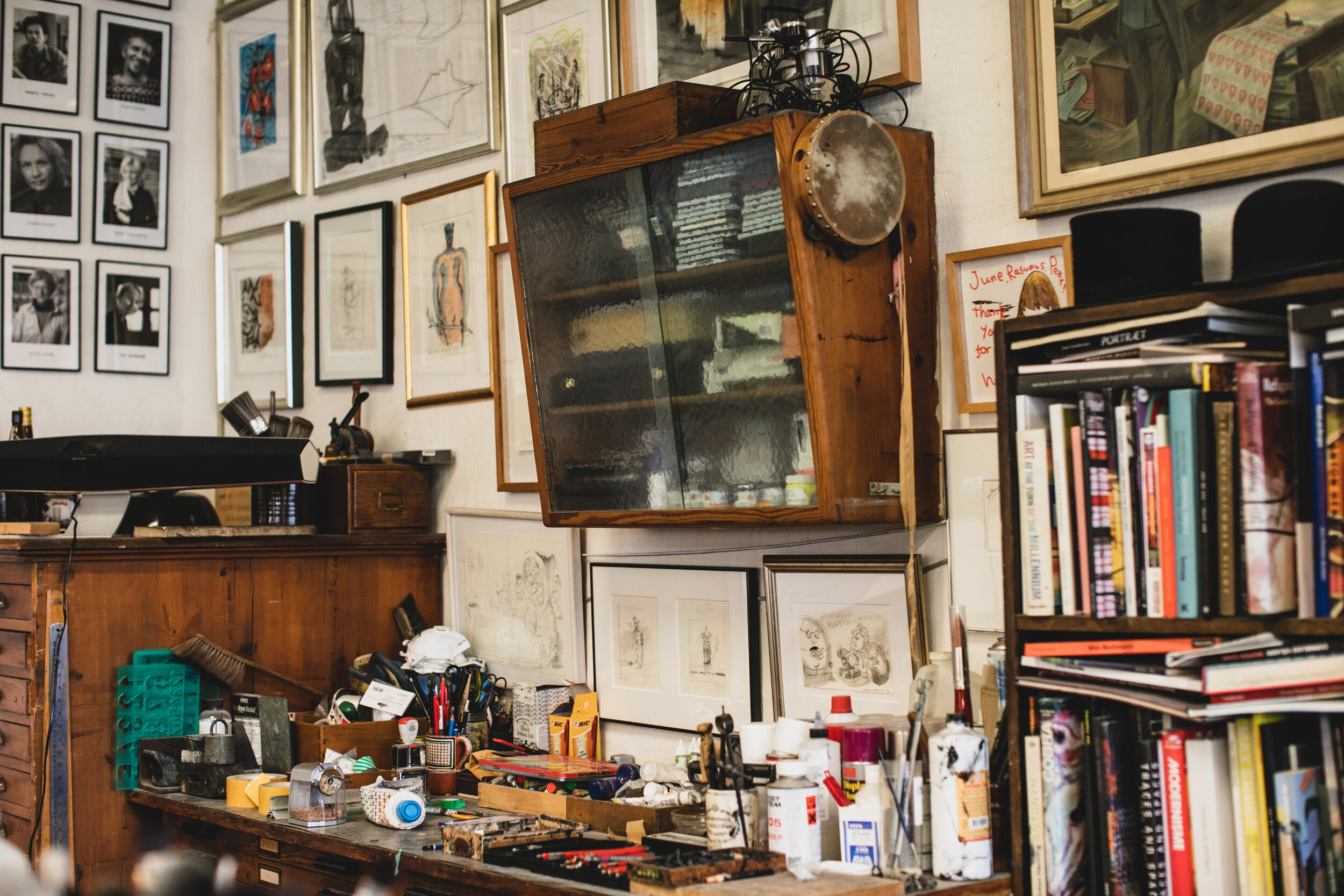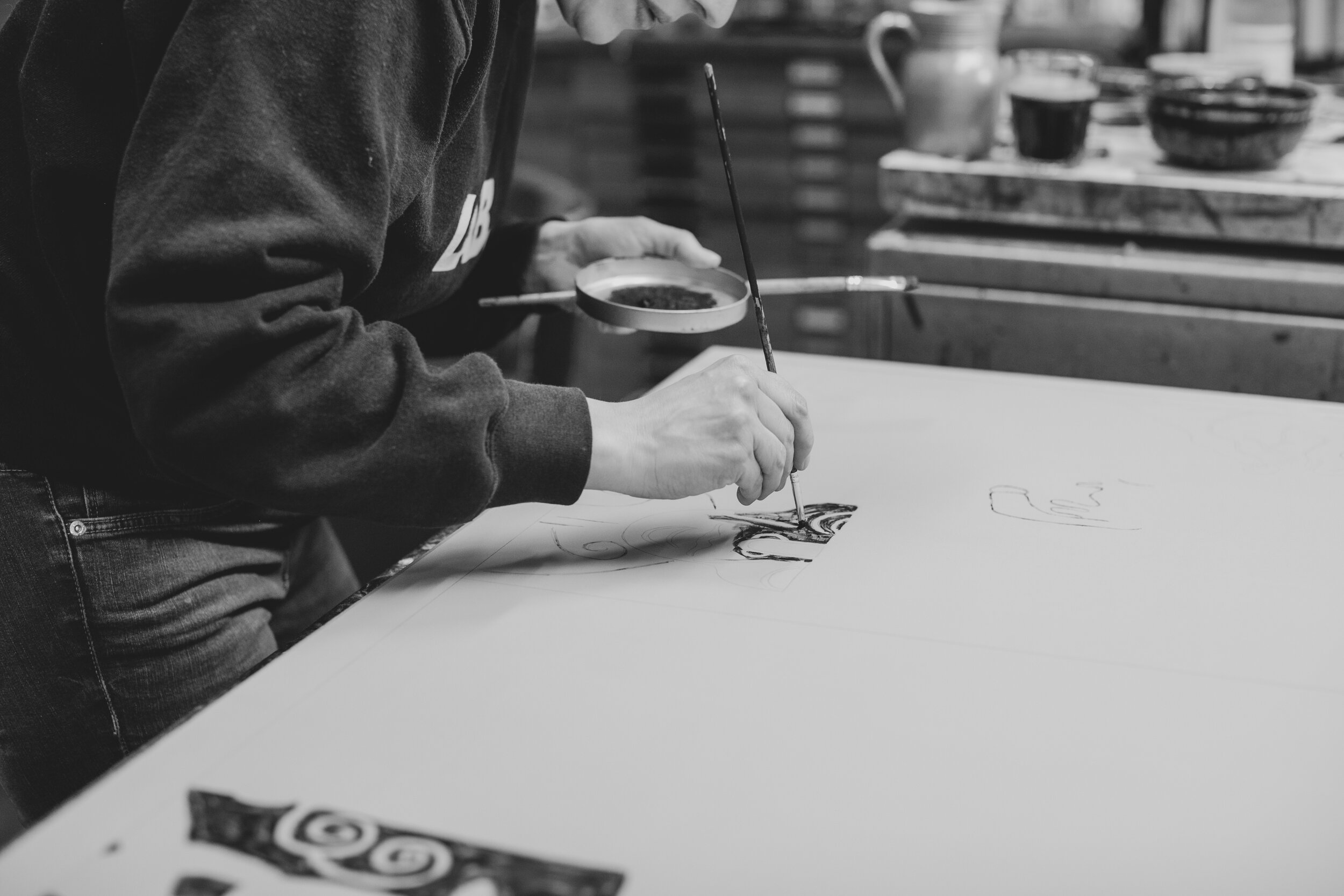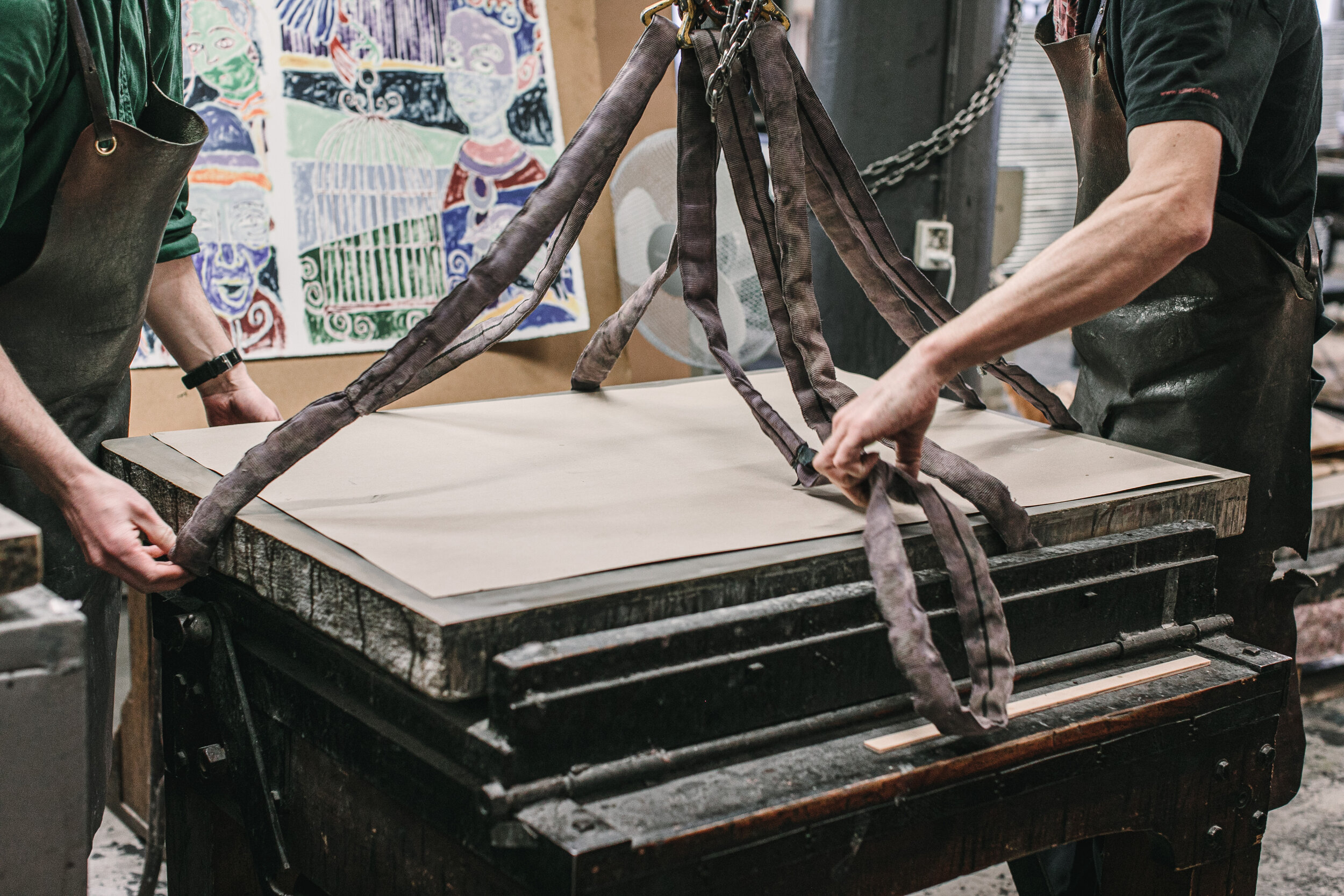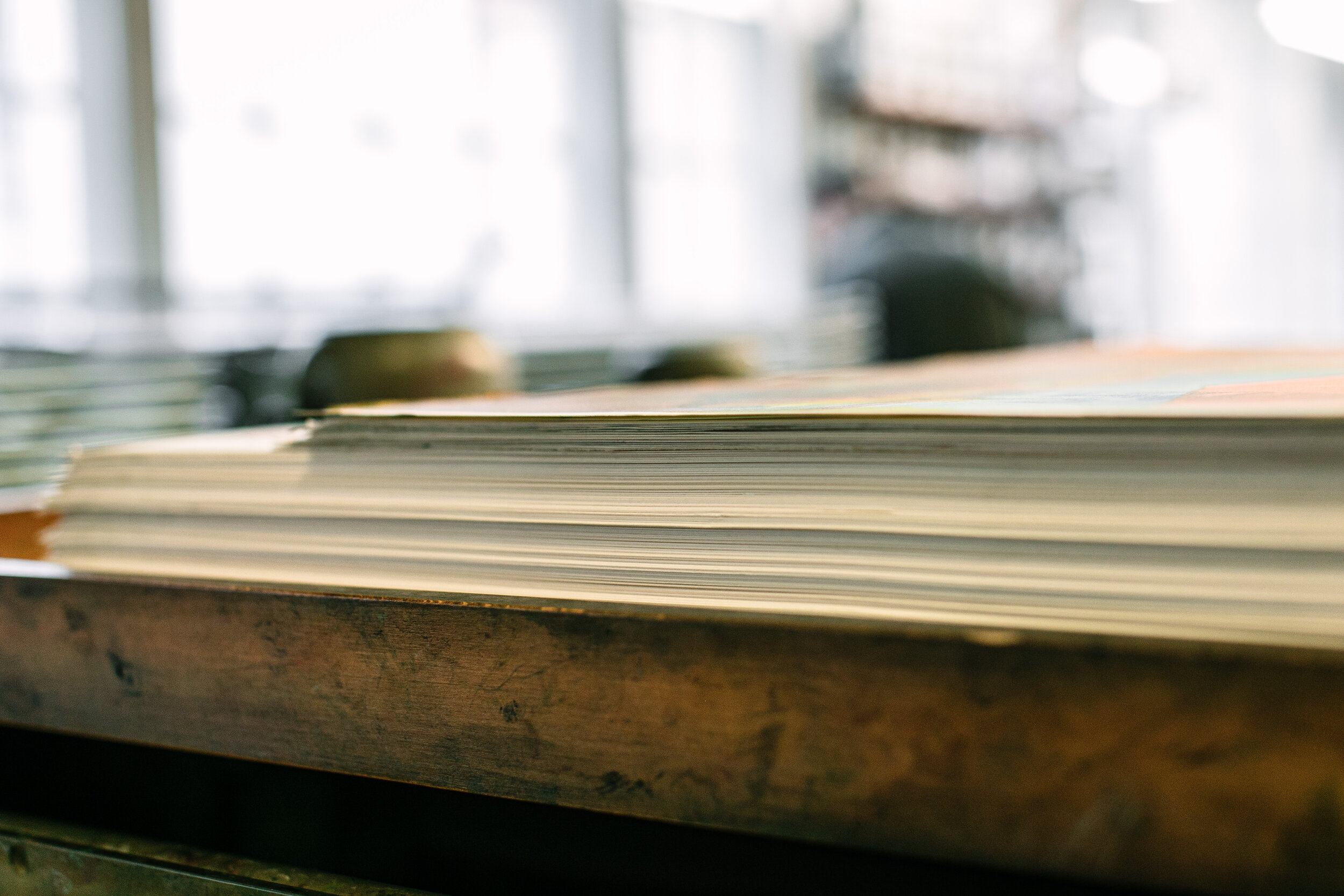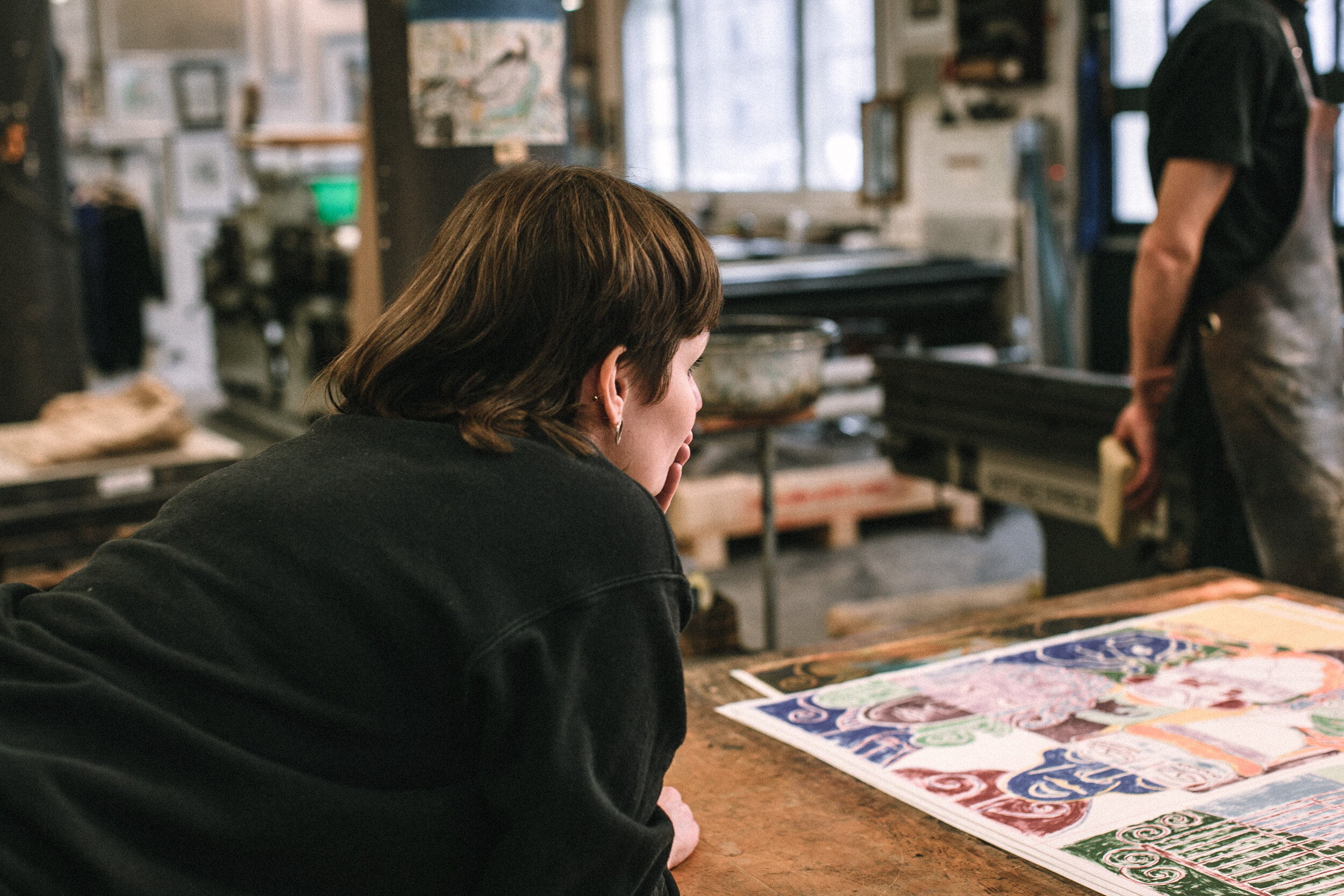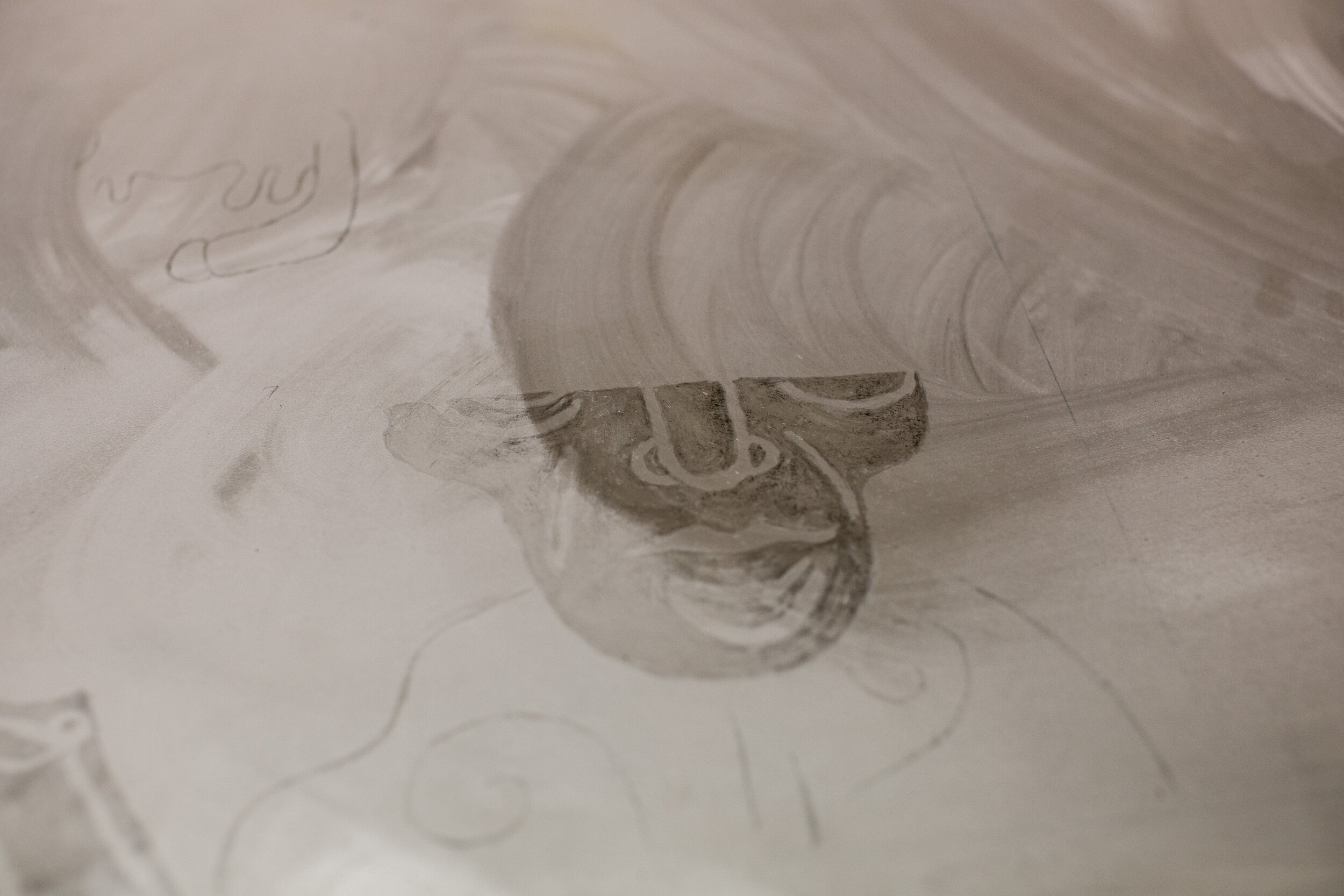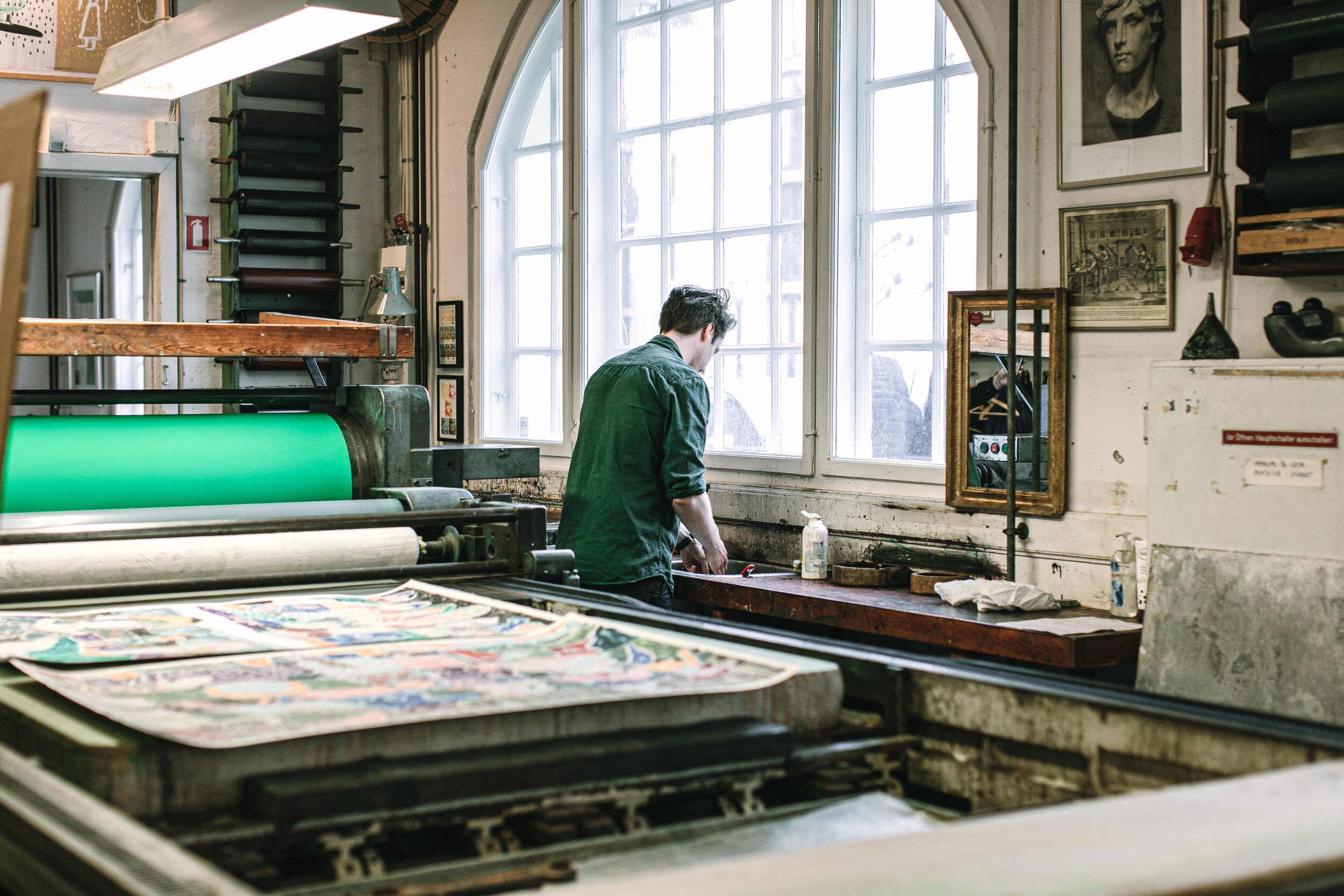ANNE TORPE
Interview Paul Tyler Production Anne-Mathilde Bilodeau
Text Marla Williams
Art Anne Torpe Photography Marina Castagna
Being an artist is multi-faceted and can be gruelling and challenging. With numerous studies showing that statistics for women are far less favourable than for their male counterparts—less representation, less exposure, fewer opportunities, less money—it appears that female artists have to build their practice in a more hostile environment than their male colleagues. With various intertwined identities—artist, woman and, for some, mother—women offer a complex space in which to explore the process of becoming a professional artist.
The team at Résidence Éditions asked me to sit down with renowned Danish artist Anne Torpe, who recently had a solo exhibition entitled Familiar Strangers at the Bricks Gallery in Copenhagen. Having graduated from the Royal Danish Academy of Fine Arts in 2009, Anne now lives and works in Copenhagen and is back to her brushes after a break she took from the art world after her pregnancy. She is currently exploring the lithographic medium at Edition Copenhagen.
Together with Résidence Éditions’ Producer, Anne-Mathilde Bilodeau, we went to chat with Anne Torpe at her home in Copenhagen, Denmark. We wanted to discover how daily society in the capital of happiness and social democracy, with its underlying mechanisms, myths, and structures, influences her life both as a professional artist and as a woman.
As a father of three children who has been living in Copenhagen for the past 14 years, I was curious to learn more about her experiences as a mother and artist in Danish society. When she came and settled in the room, with her very grounded yet quietly intense presence, we got to talking about her children, aged 5 and 10. Ella was the eldest and she laughingly referred to her youngest, Dagmar, as the “naughty one”. The youngest of three herself, Anne was fascinated to discover that many of her fellow classmates at the Arts Academy in Copenhagen were also younger siblings, surmising that this might be due to the fact that younger siblings have a tendency to get away with more.
A self-described painter, Anne said that from around 2012-2016, she became especially interested in what happened when she made a mistake while painting and how she could use the mistake in her process and even benefit from it. I was curious as to whether this was deliberate and explicit, whether she was looking for a way to manage her mistakes, or whether she just had to find ways to cover them. She explained that while they had started out as simple mistakes, she became fascinated with doing mistakes “on purpose” in order to work with them and turn around her paintings. As she used very thin layers of paint, it felt like she was doing 3-dimensional collages. Since then, she has increasingly incorporated found objects, such as cardboard, bits of wood, or whatever else she might stumble upon, into her pieces.
Her eldest now being 10 years old, I realized that she had started incorporating mistakes into her work when her first born was a toddler. She saw a correlation between her life turning out differently than intended and her incorporating mistakes into her art, even if an unintentional one. With a laugh she gave us a window into that period of her life. She had graduated from the Academy at the age of 27 and realized only one week later that she was pregnant. Scared of becoming a mum and in complete shock from the news, she drastically altered her plans and decided to stay in Copenhagen instead of moving to Hamburg, Germany and going on to residencies. With everything up in the air, she was even unsure as to whether she would continue on as an artist. Frustrated, on maternity leave and living with her partner, who is now her husband and the father of her two children, she completely stopped painting for two years.
When her daughter turned one and started going to daycare, though, Anne decided to go back to her studio at Carlsberg, which is now torn down. During the first couple of weeks, she just sat at her desk, put her head down on her arm and fell asleep, catching up on a year of broken sleep. It took her a long time to finally be able to get back into her art, as she had lost track of everything artistic-wise over the past two years. Having exited the art world before becoming a mother, she was now re-entering in a “post-child” phase.
Interested in how it must have been for her as a young mother in the art world, I wanted to know whether she was the only one in that situation and what it was like creating her art within the classic Danish 8am – 4pm structure, artists usually being creatures of the night. Younger than many of her other colleagues, she said that there was only one other mother in the studio. Despite having worked through the nights while at the Academy, she found that she actually enjoyed coming in early in the mornings, as she was the only one there, saying laughingly that she could sleep undisturbed. Being someone who likes working alone, she found the times suited her quite well.
Her life was and continues to be hectic, something other parents can most certainly relate to. Being a freelancer myself, I know that her line of work often comes with an added layer of stress. I was curious as to what her early days as a mother were like. While she couldn’t remember exact details, she recalled a haze of waking up early, biking to Kindergarten in the morning and then again in the afternoon, with drop off and pick up times structuring her days, as they still do.
While clearly in love with her family, Anne also finds certain aspects of simultaneously being a mother, wife and artist challenging. The lack of time, of course, being number one. With her husband, Christian, working in a high-pressure environment as an architect and being the breadwinner of the family, she is often the one dropping off and picking up her children in the same day, even though these tasks are often shared by both parents in Danish society. Since she doesn’t have a boss to report to, unlike her husband, it can also fall on her to stay at home when needed. She made sure to mention that Christian was picking up the children today, saying that he also contributes.
As her children grow up, she feels as though she is getting some freedom back, for which she is grateful, especially when she sees her colleagues with newborns. She’s even looking into residencies again, including those that accept children. She also moved her studio to her home so that when there are any looming deadlines, she can put the kids to bed and go work there. Her studio being a sacred space into which neither children nor phones are allowed (only her cat and her husband can visit when invited), she is able to work completely undisturbed and enter a “kids-off/artist-on” mode.
Although her plans to travel the world were put on hold, Anne feels as though she is nonetheless travelling through her art. She’s currently creating paintings from souvenirs and also from Cabinet of Natural Curiosities, a book filled with a collection of drawings that a Dutch pharmacist named Albertus Seba compiled of different animals and species from around the world. Having kept them in drawers in formaldehyde, he hired artists to document his collection. Anne finds many of their drawings to be absolutely amazing because as she said, “the animals almost smile or have a glint in their eye”. Sometimes the pharmacist couldn’t afford to bring an artist along and had to put what he saw in words for an artist to draw, a “phantom drawing” of sorts. She feels a kinship with those artists, as she’s sitting in Copenhagen, making paintings of places that she hasn’t been to or seen with her own eye, but nonetheless putting it all together to make some kind of sense.
“I thought that my life would turn out in a different way, but I had this wonderful daughter of mine. I had plans of traveling the world and living in different cities. Now I’m doing paintings with souvenirs of various places from around the world. It feels like I’m travelling, but I’m not. I’m here in Copenhagen doing drawings and making paintings of places I haven’t been to and I’m putting it all together to make some kind of sense. ”
Her alluding to this made me think of a provocative advert from Scandinavian Airlines (SAS) running at the moment, which turns things on their head and suggests that so many good things are in Scandinavia because Scandinavians are like Magpies, going around the world and taking the best of things. Anne agreed, referring to their Viking past.
The conversation then turned to how things have changed for female artists in Denmark over the past ten years. Happily, Anne has seen an improvement, particularly when recalling an incident that happened to her a decade ago: shockingly, when she first learned she was pregnant, a female professor encouraged her to get an abortion, thinking this was the only way she could advance her career as an artist. Now, she feels as though there is a greater awareness about women and female artists, brought about in part by the MeToo movement, which is being felt through greater inclusion of women in institutions and increased sales of their artwork.
She then gave us a guided tour of her home and studio. Her house, surrounded by a garden, is situated in a unique eco-village, a community that was built in 1948 on a former waste site that was given to people who had to give up their houses in other parts of Copenhagen, particularly the poor and artists. Everything in the neighbourhood, including the homes, are built from recycled materials, montage houses of sorts. Hers is slowly being built out in layers from an old scout’s house, something that clearly delights her enormously. With a barely audible highway in the background, the sound of birds chirping and leaves rustling instilled a sense of calm in the unique area. We then went to her studio, her sanctuary, a tidy space with 3 white walls and one dark olive green one, images and souvenirs she collected along the way, including those from the Cabinet of Natural Curiosities, above and around her desk.
Due to the renovations being done in their home, she’ll be without her studio for the next few weeks, so she’s currently trying to find a space in the city to get her work done for an upcoming smaller group exhibition, and a larger solo exhibition next year.
Not wanting to take too much time out of her extremely busy schedule, I had one final question for her before we let her get back to her busy day: what advice would she give to aspiring artists, pregnant or not? She stressed, that whether male or female, to just keep on going. She was just stubborn enough to continue as she didn’t know what else to do. Despite the struggle, just continue doing what you do.
Résidence Éditions would like to thank Paul Tyler, Anne Torpe, Morten Halborg-Møller from Bricks Gallery, AndreAs Saxild from Heartbeats DK, Avery thompson and Edition Copenhagen for their contribution and their time.
About Paul Tyler
Paul works within the corporate, public & cultural sectors and has been Nominated for a BAFTA (2005), BBC Creativity Award (2004) and Association of Online Publishers award (2005). Paul moved in 2006 from London to Copenhagen where building on twelve years of BBC television & digital production experience, he worked with international companies to develop concepts. Paul co-setup the Copenhagen School of Design and Technology’s Digital Concept Development graduate programme in 2010. Paul holds a BSc. (Hons) Physiology with the History and Theory of Art & Design.
Article published in April 2020
Working the stone
Following the success of Anne’s latest exhibit Familiar Strangers at Bricks Gallery in Copenhagen, where you can find most of her work, Anne was invited for an art residency at Edition Copenhagen, where she worked with expert lithographer Rasmus Urwald and his team, to explore the lithographic medium and transpose her practice to unchartered territory, thus creating a limited series of original lithographic prints. These are available at the gallery and in its online shop.
The world renowned 61-year-old lithography workshop and gallery in the center of Copenhagen invites international and Danish established and emerging artists, to work with the traditional lithographic limestone printing process, one at a time. As the owners, Rasmus Urwald, Dannie Vieten and Peter Wissing Sørensen, state, this process gives the artist an opportunity to work freely to continue developing the printing process and sustain the knowledge of original lithography as a unique tool of artistic expression.

